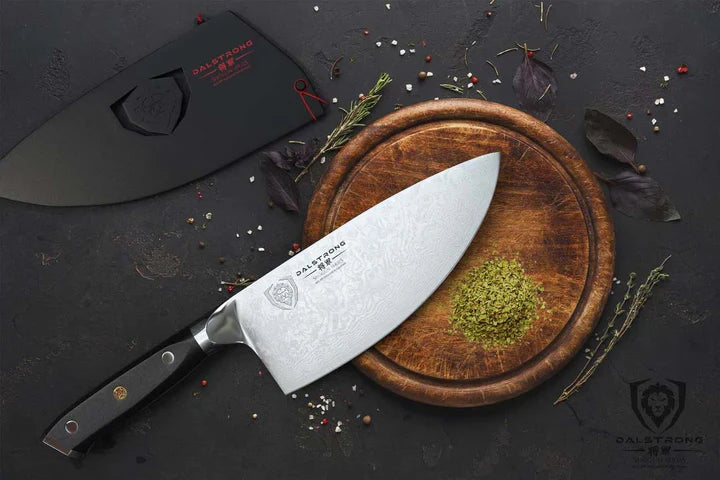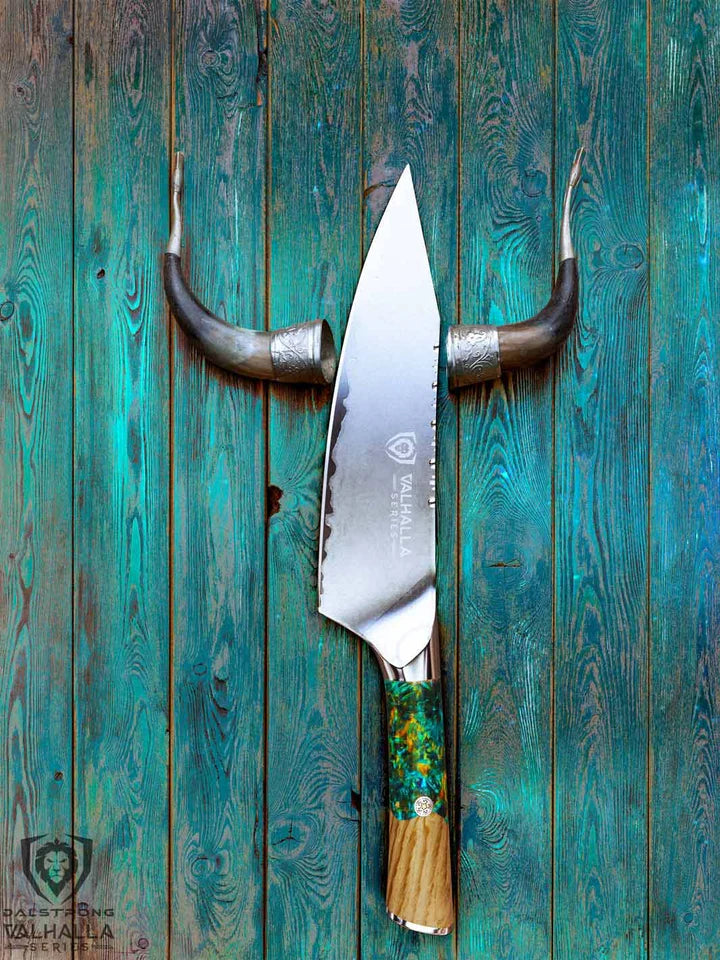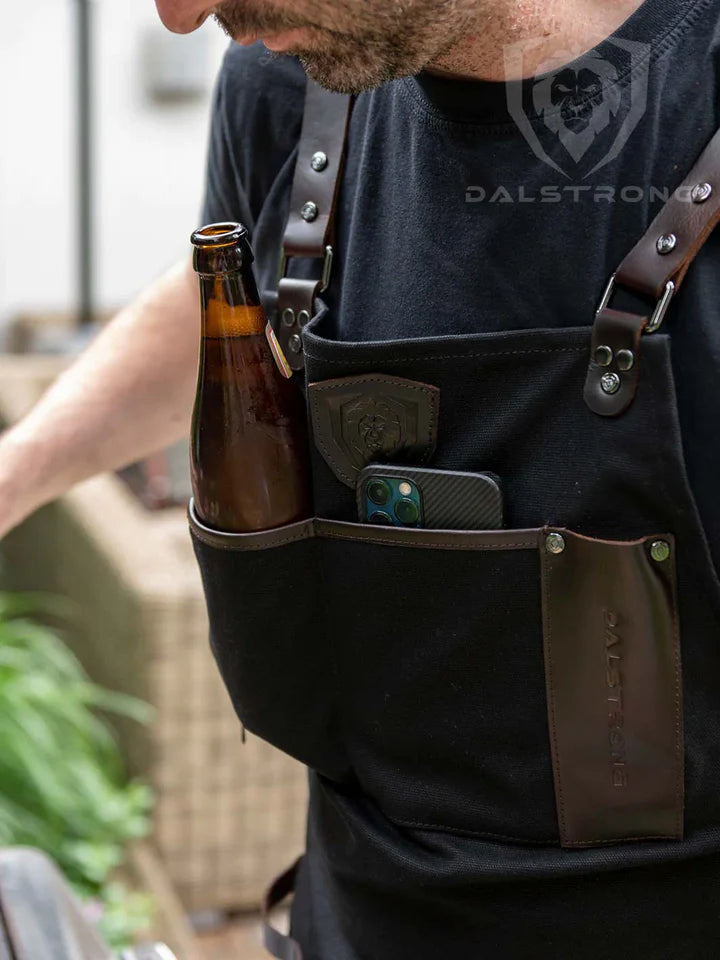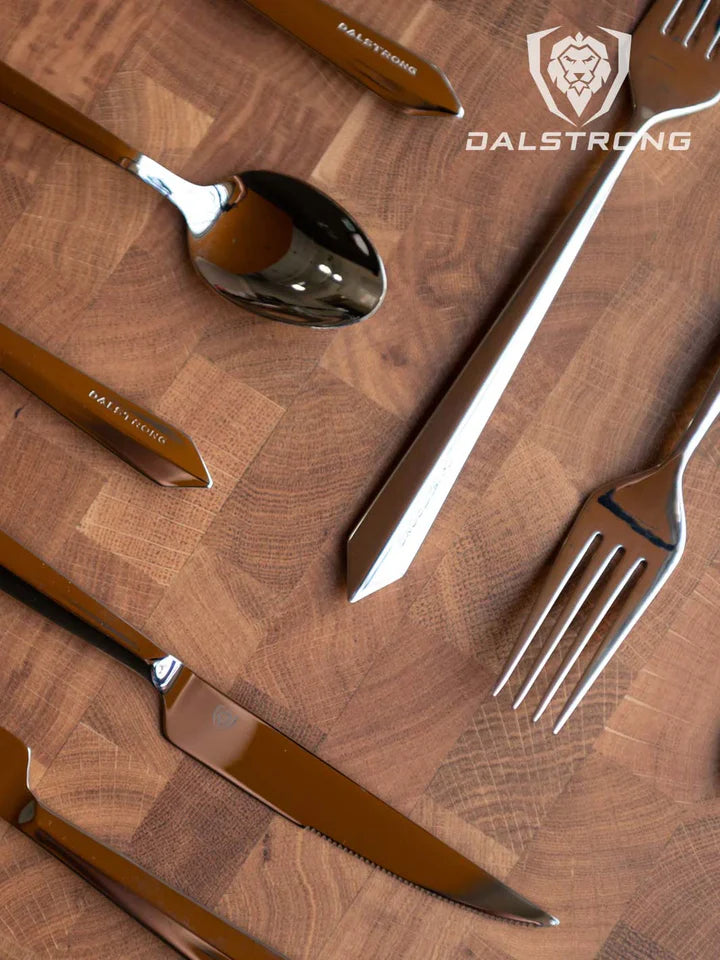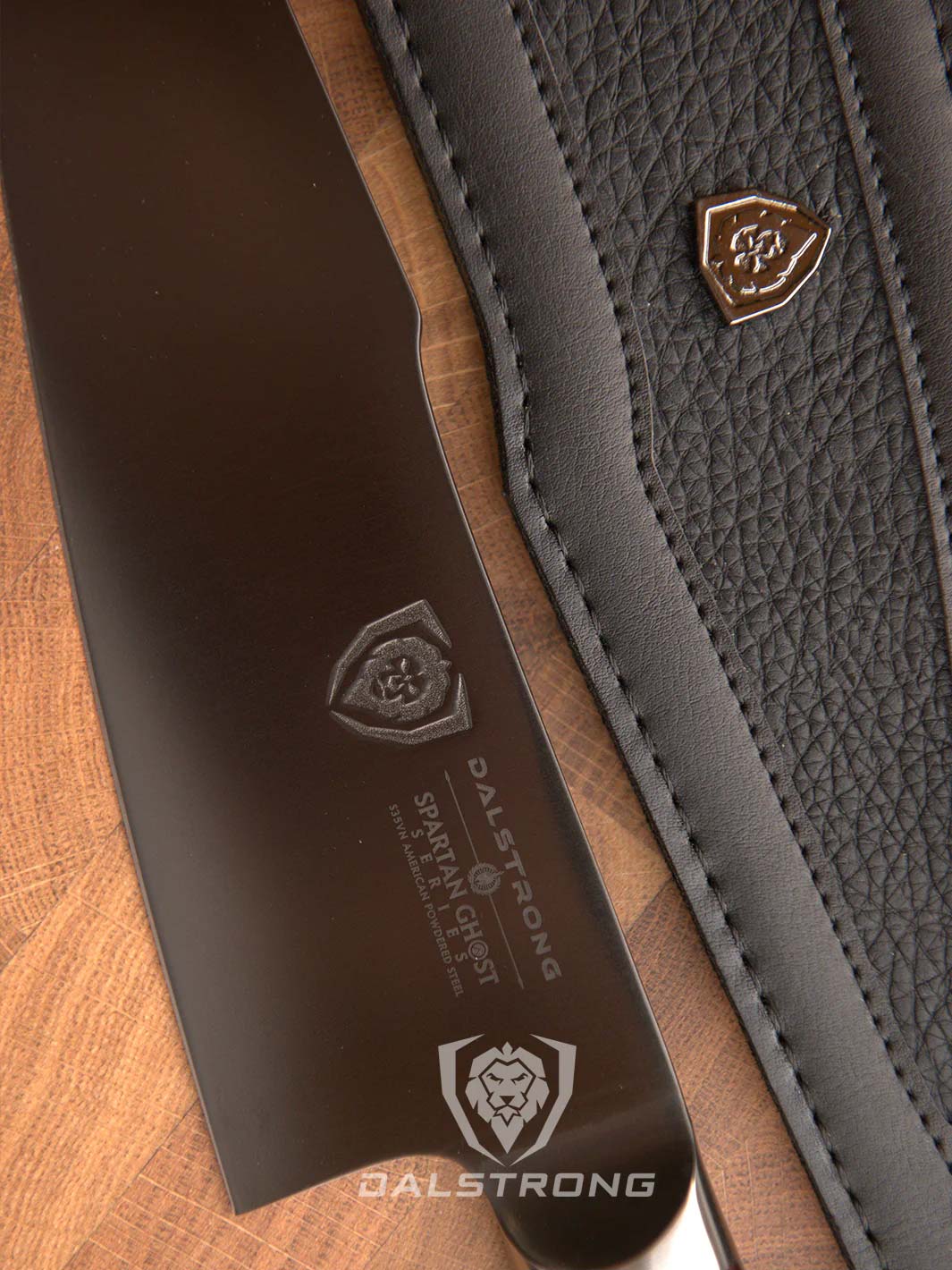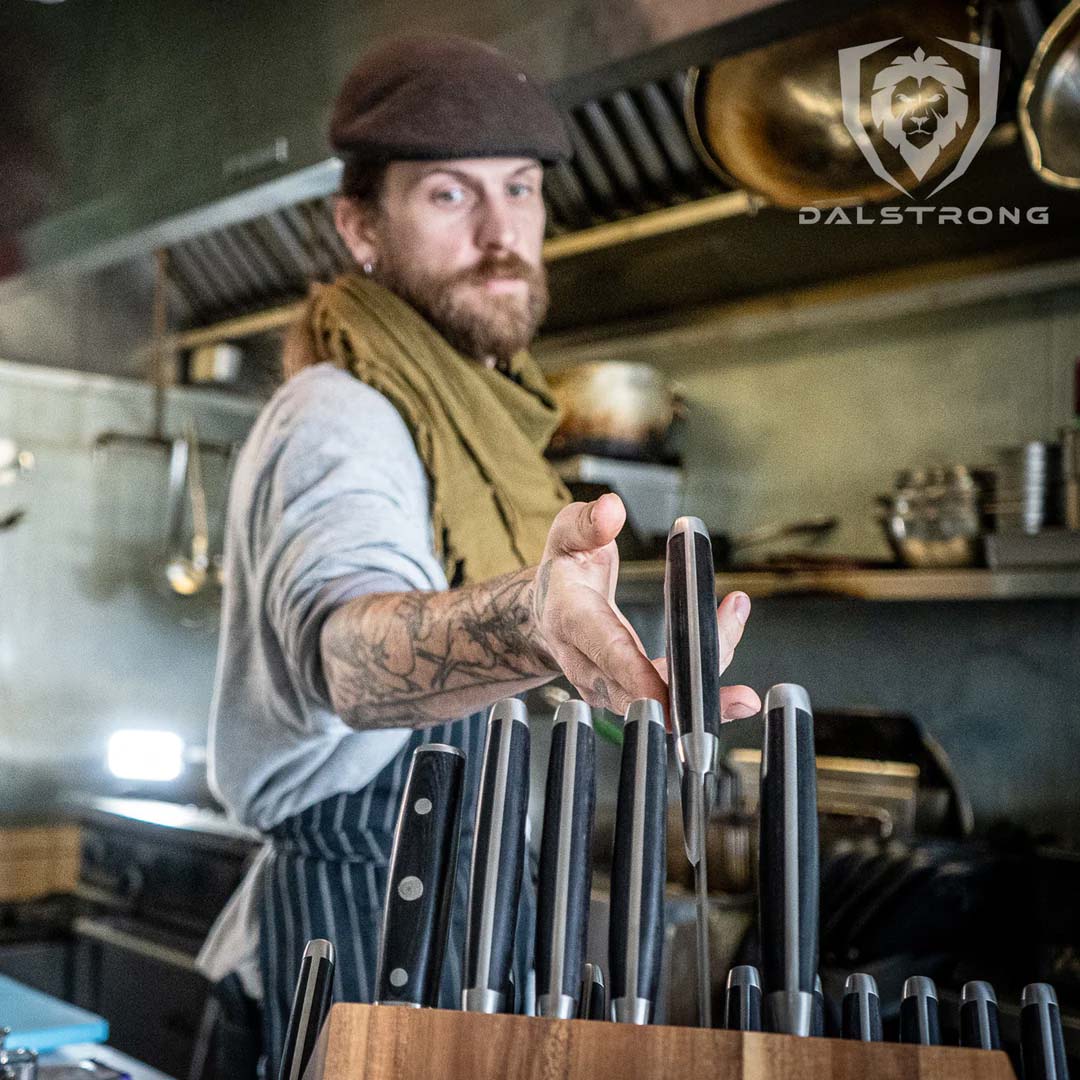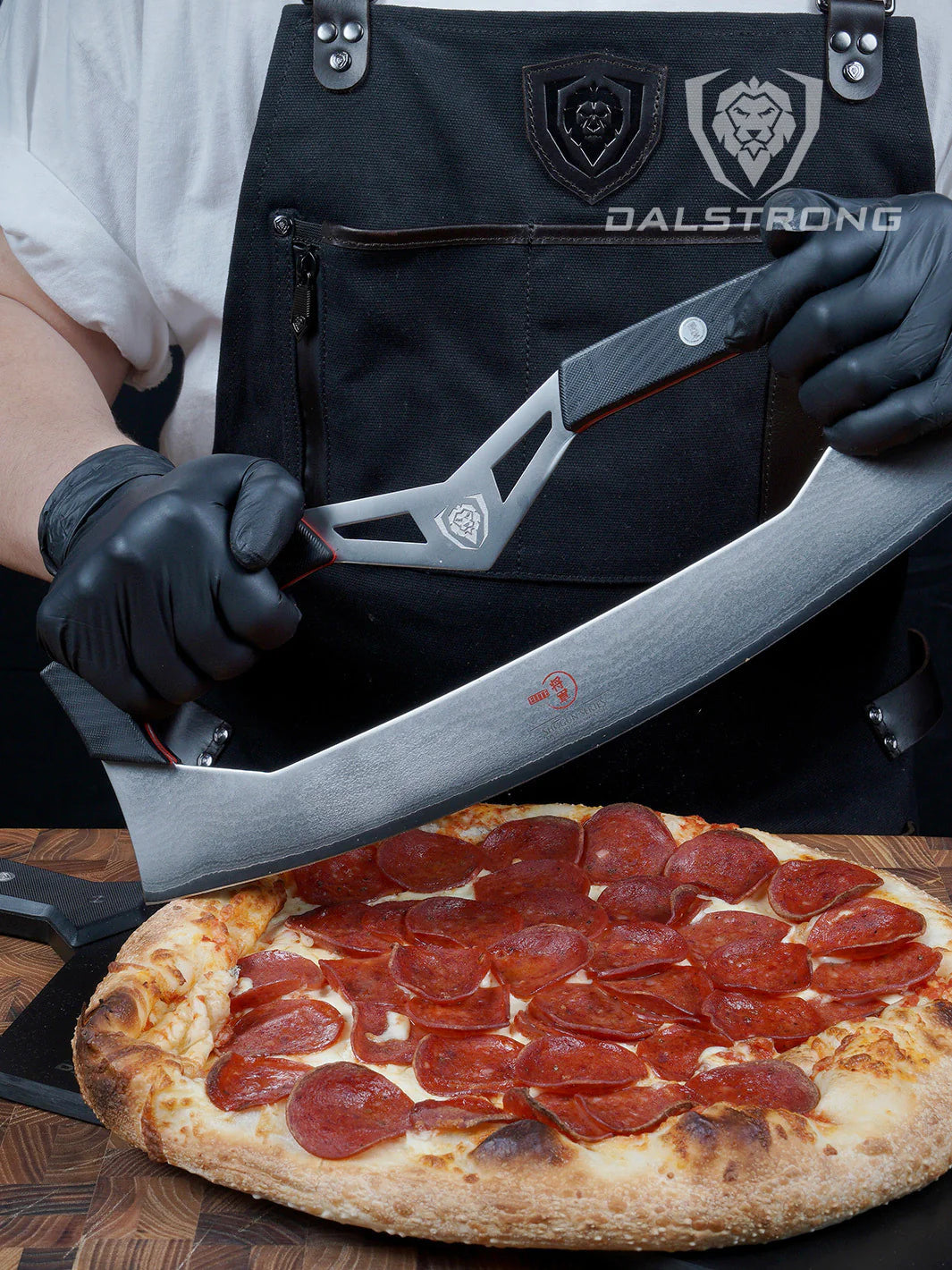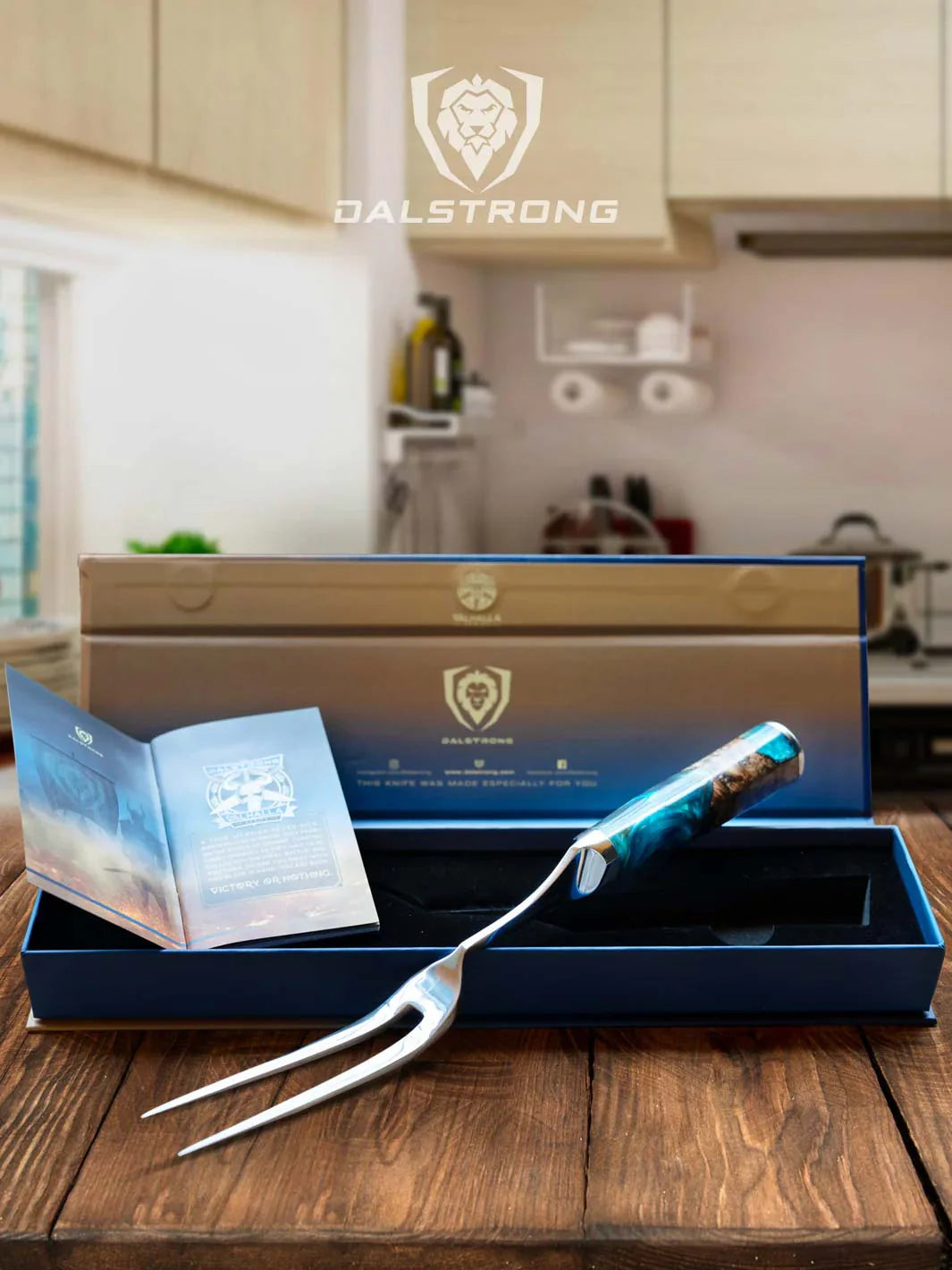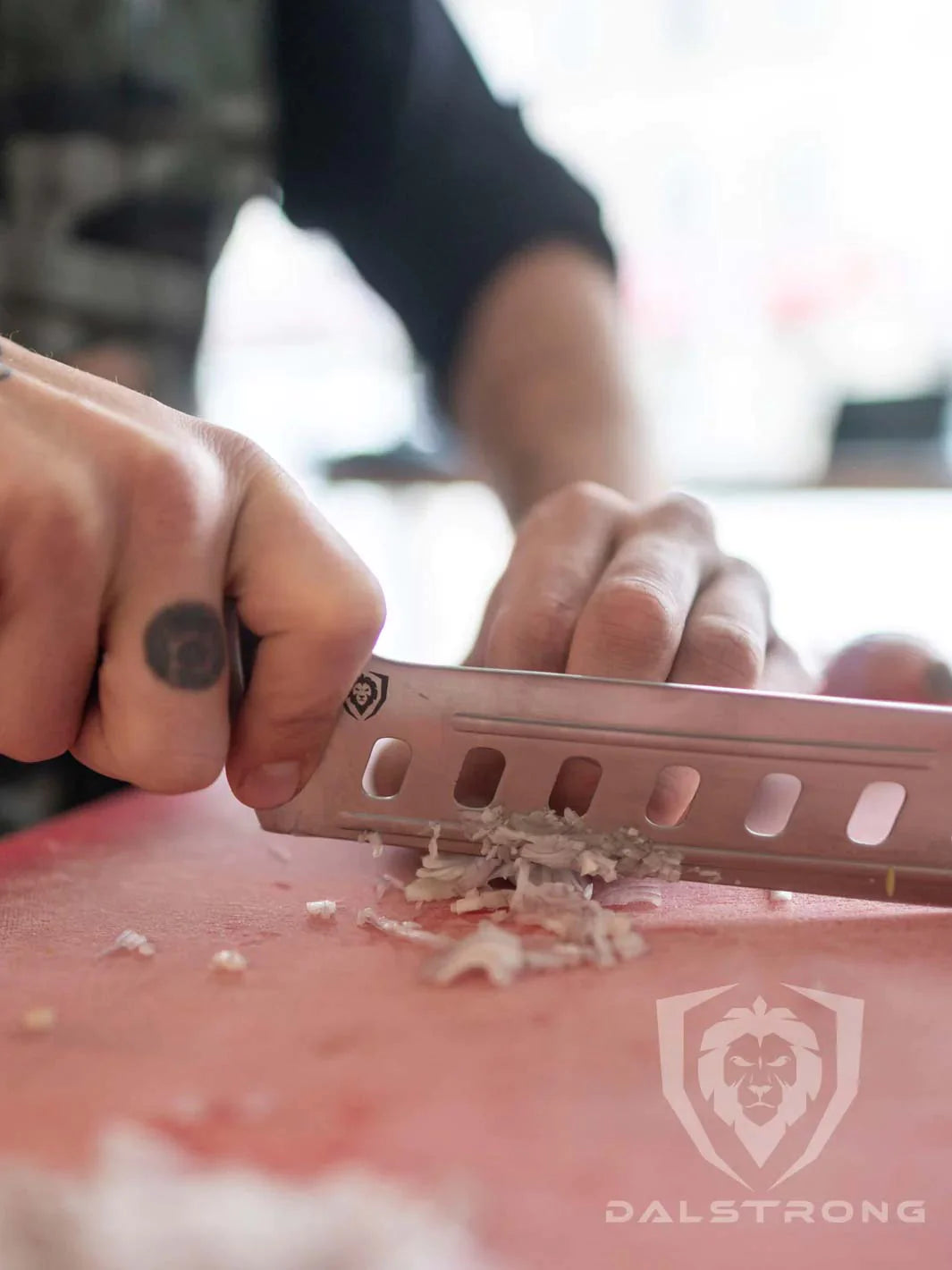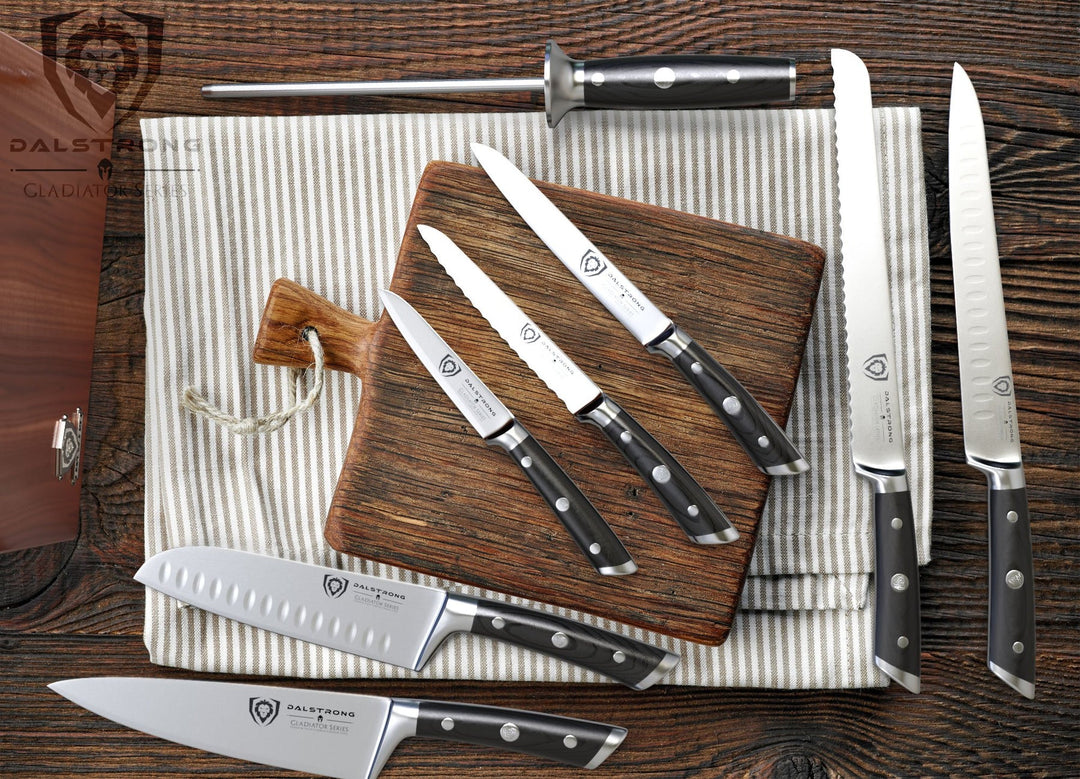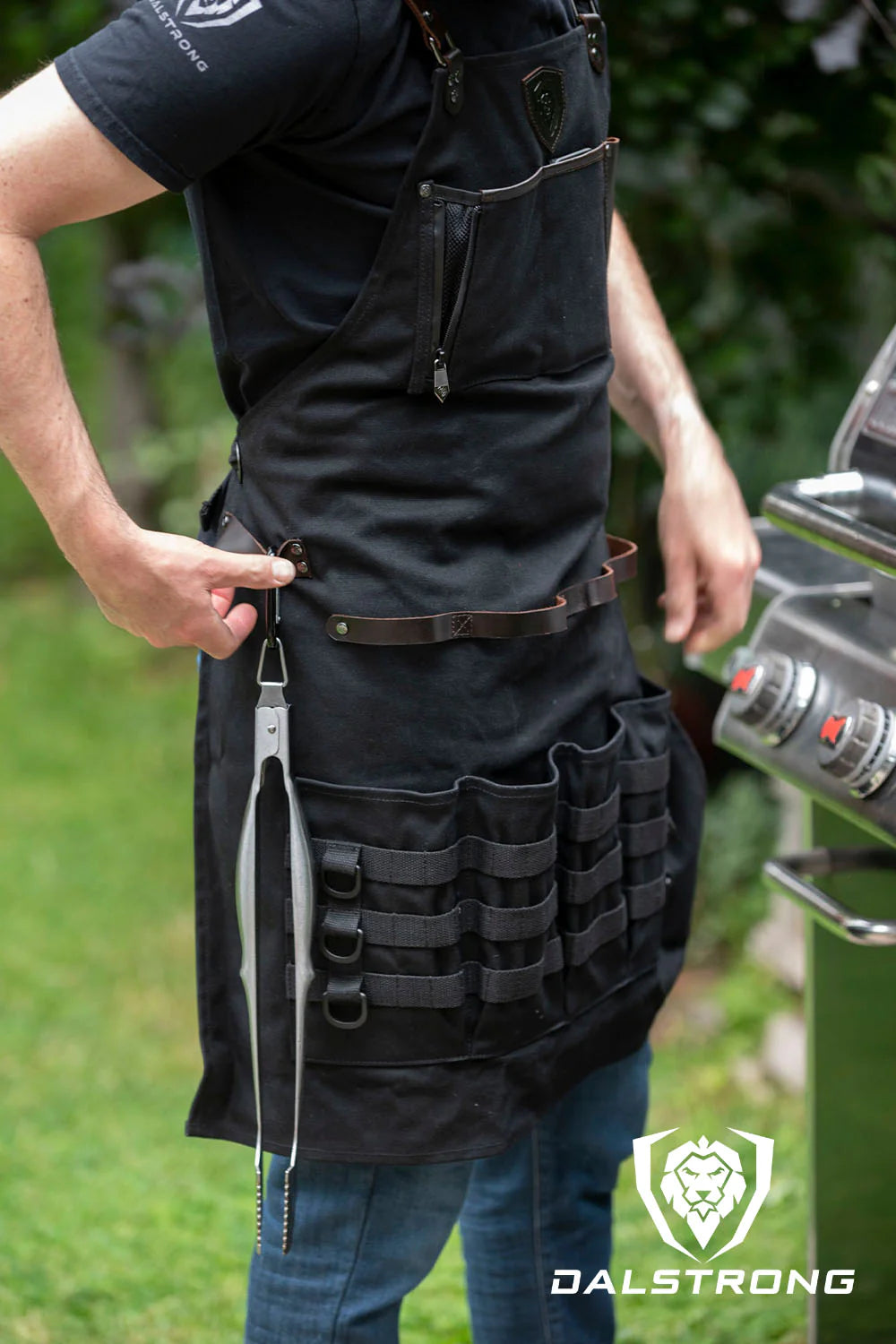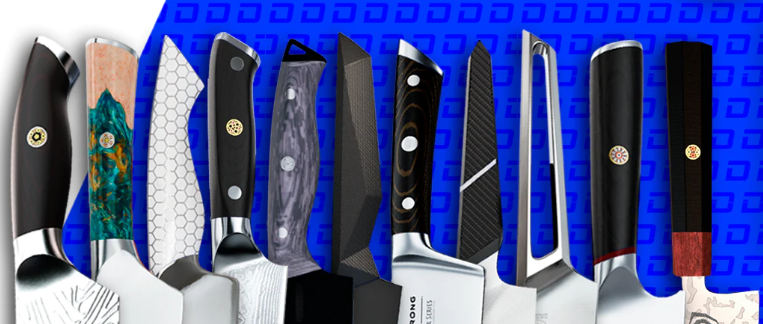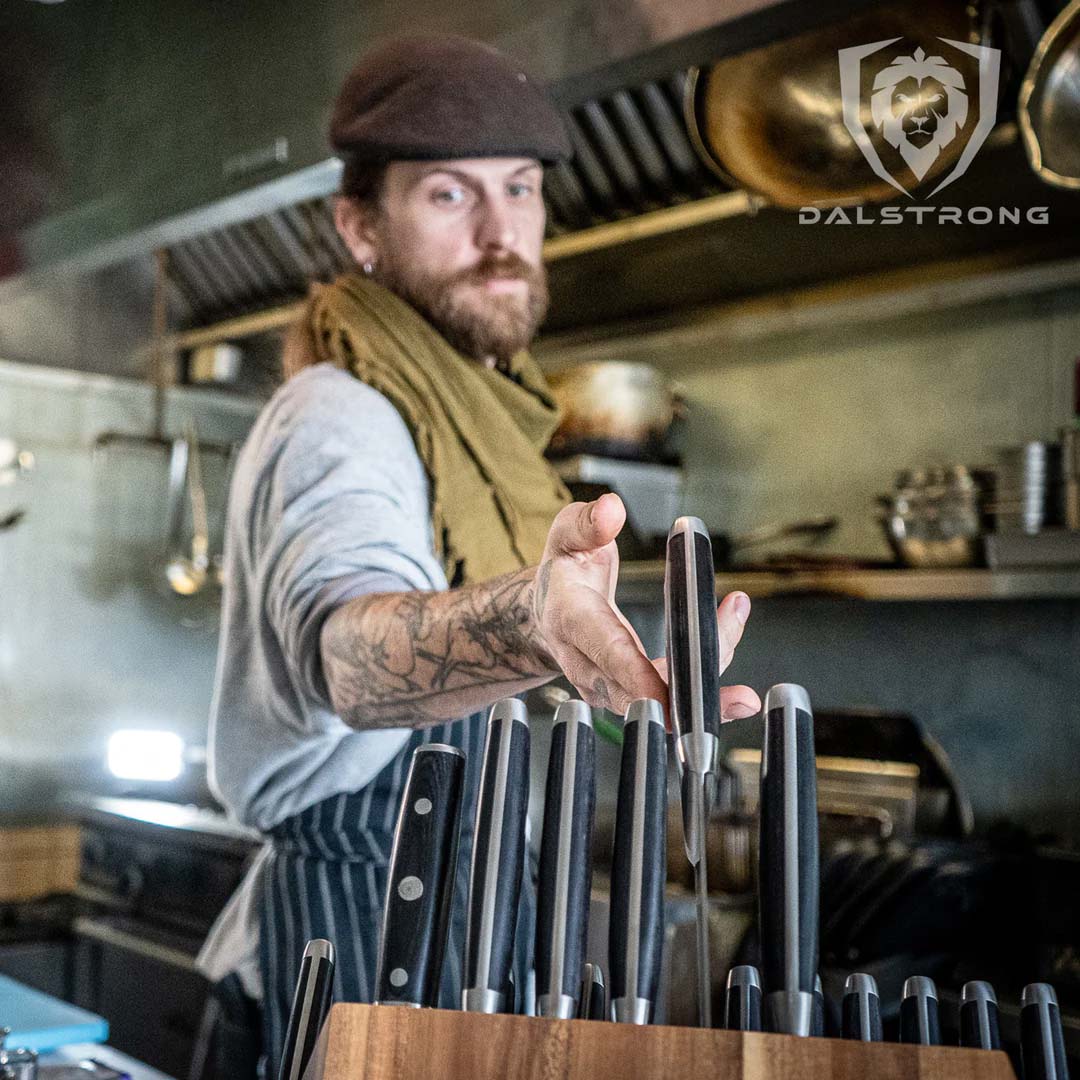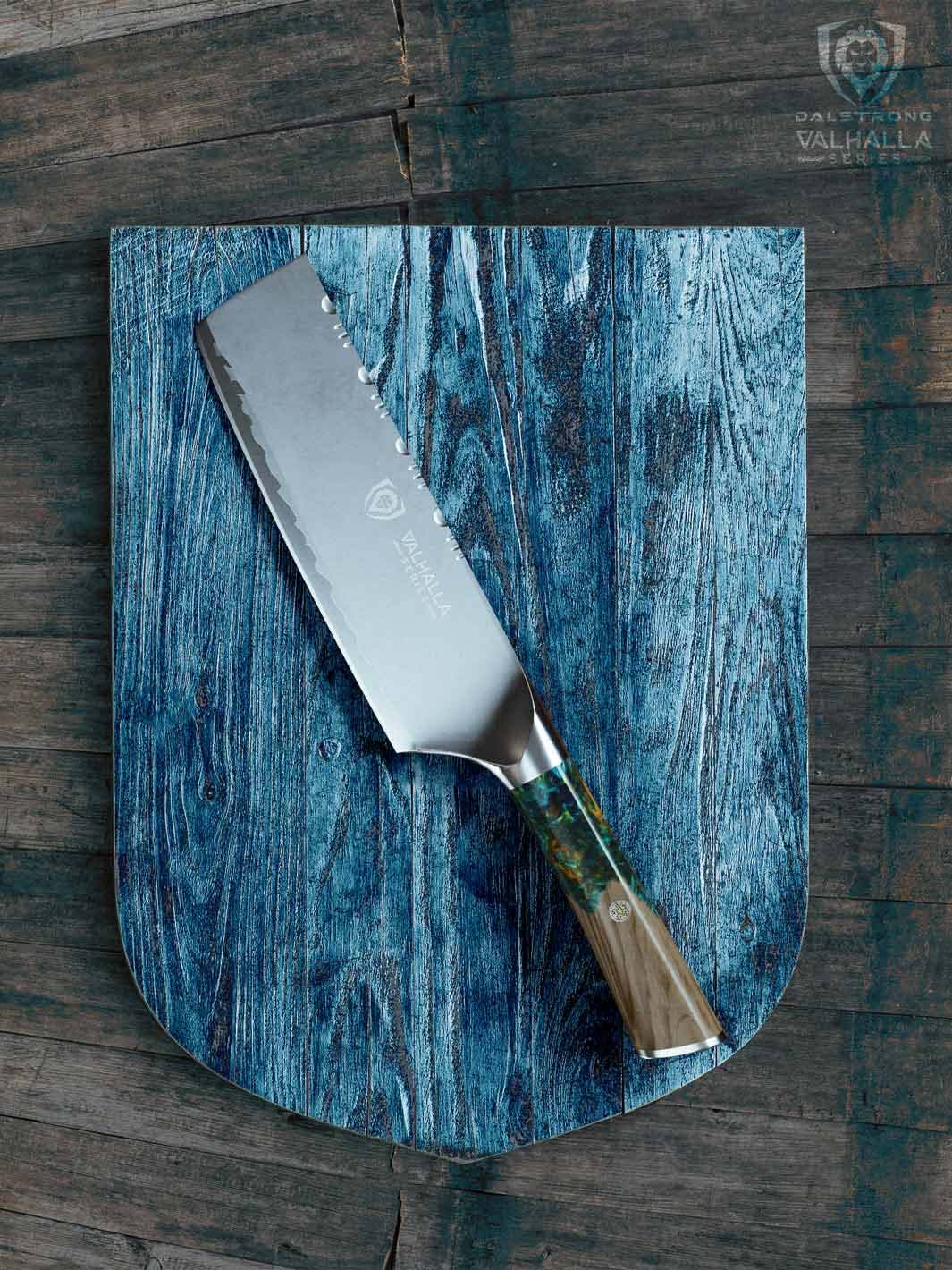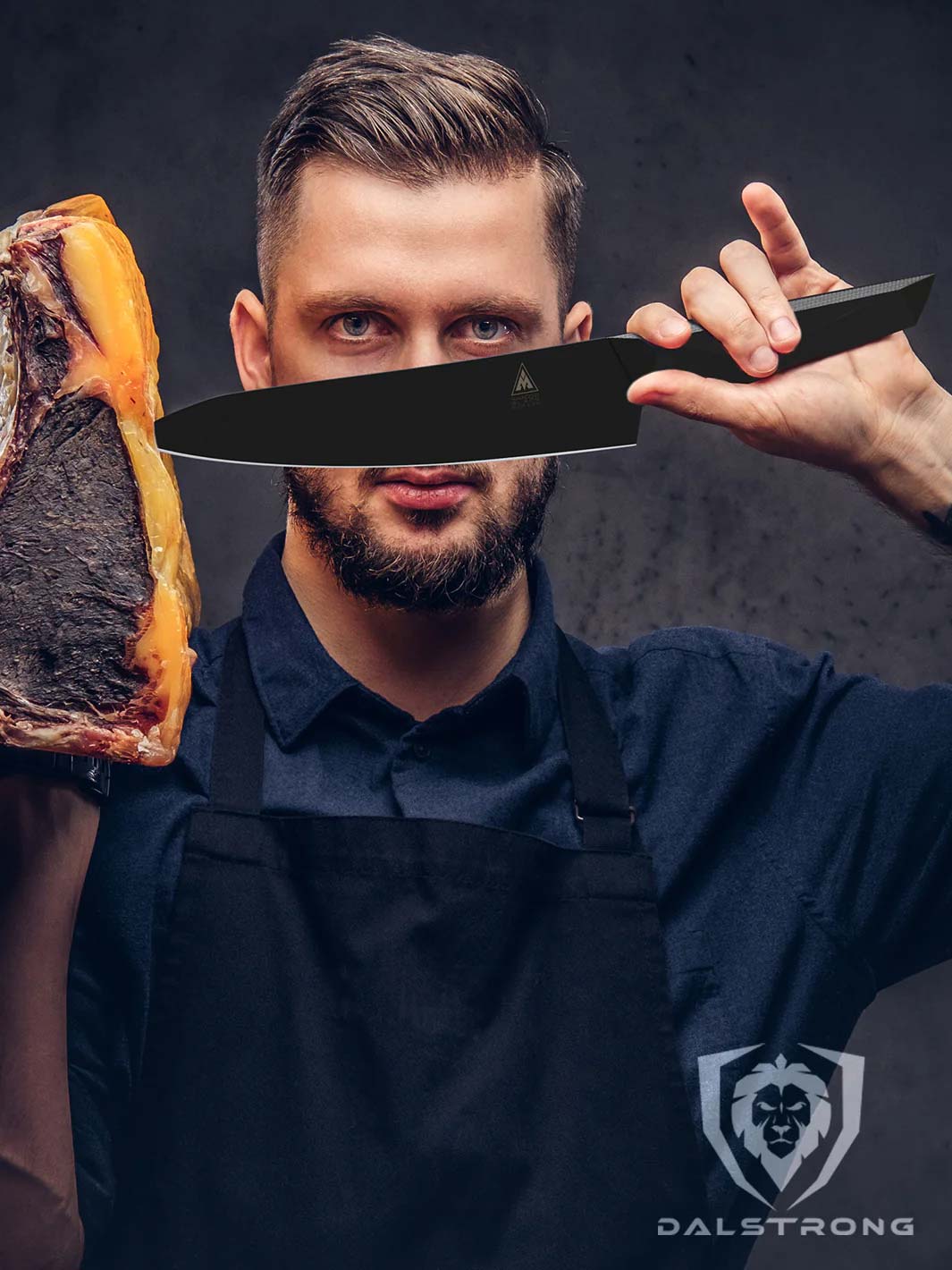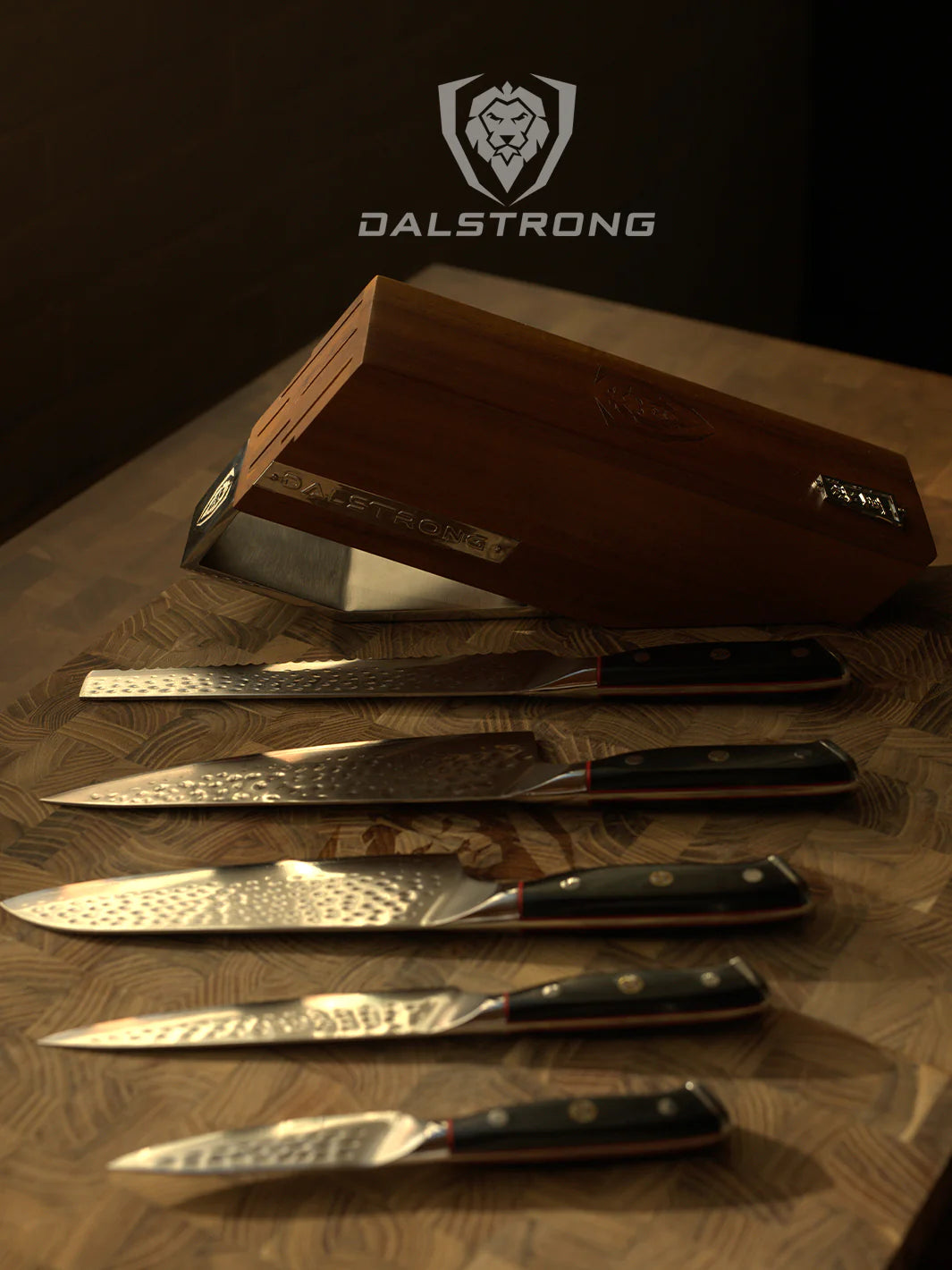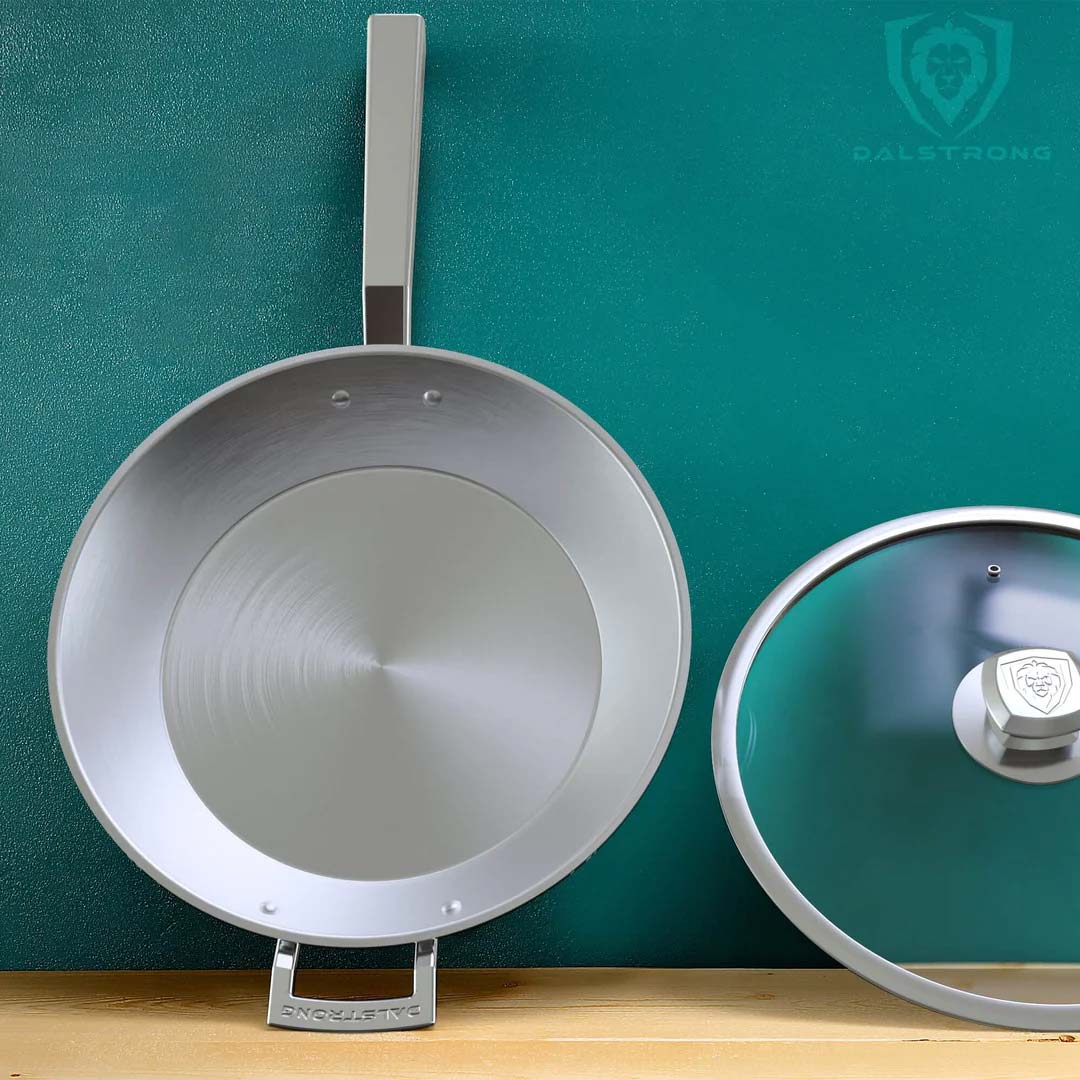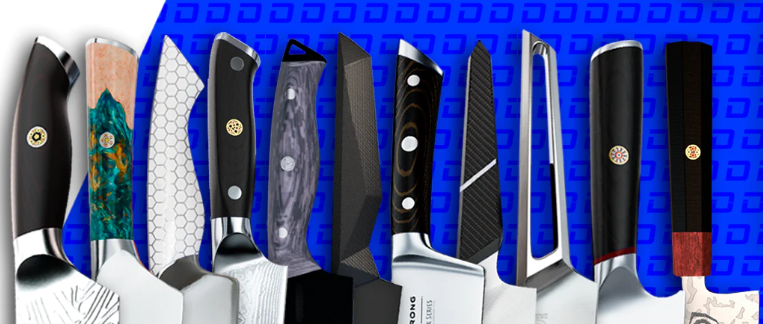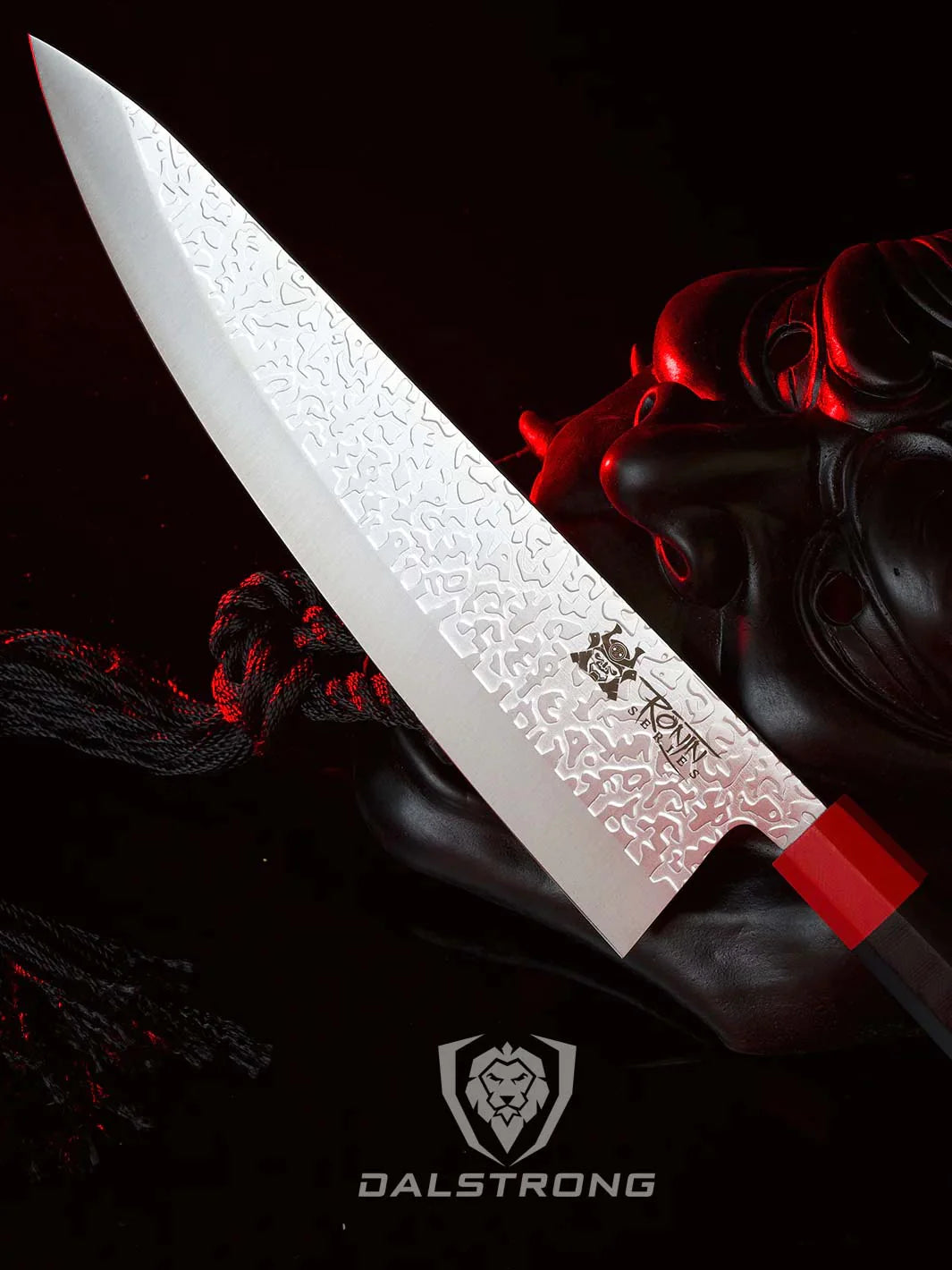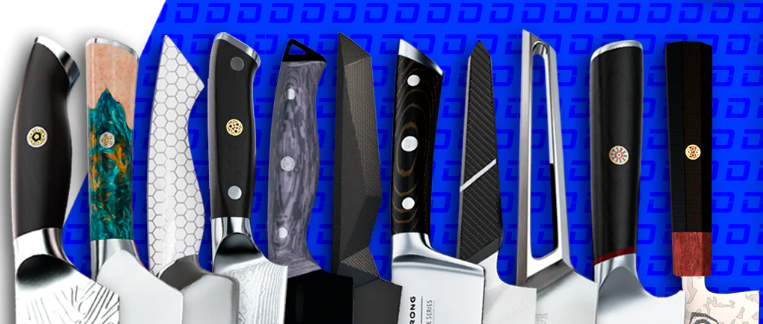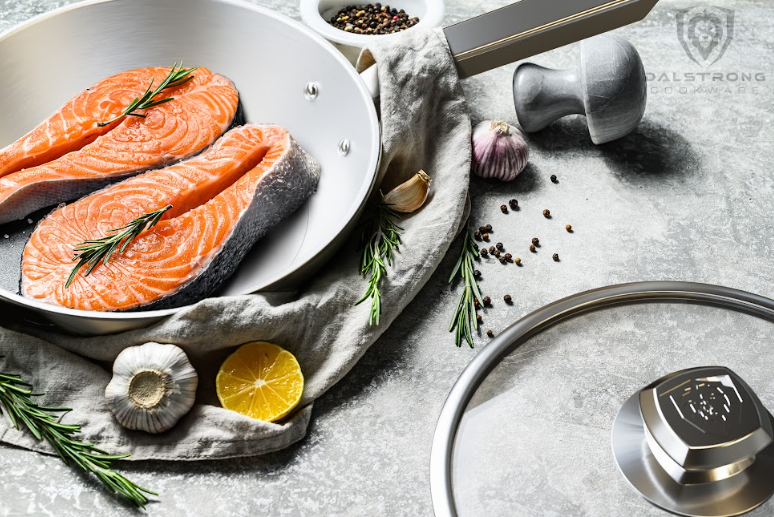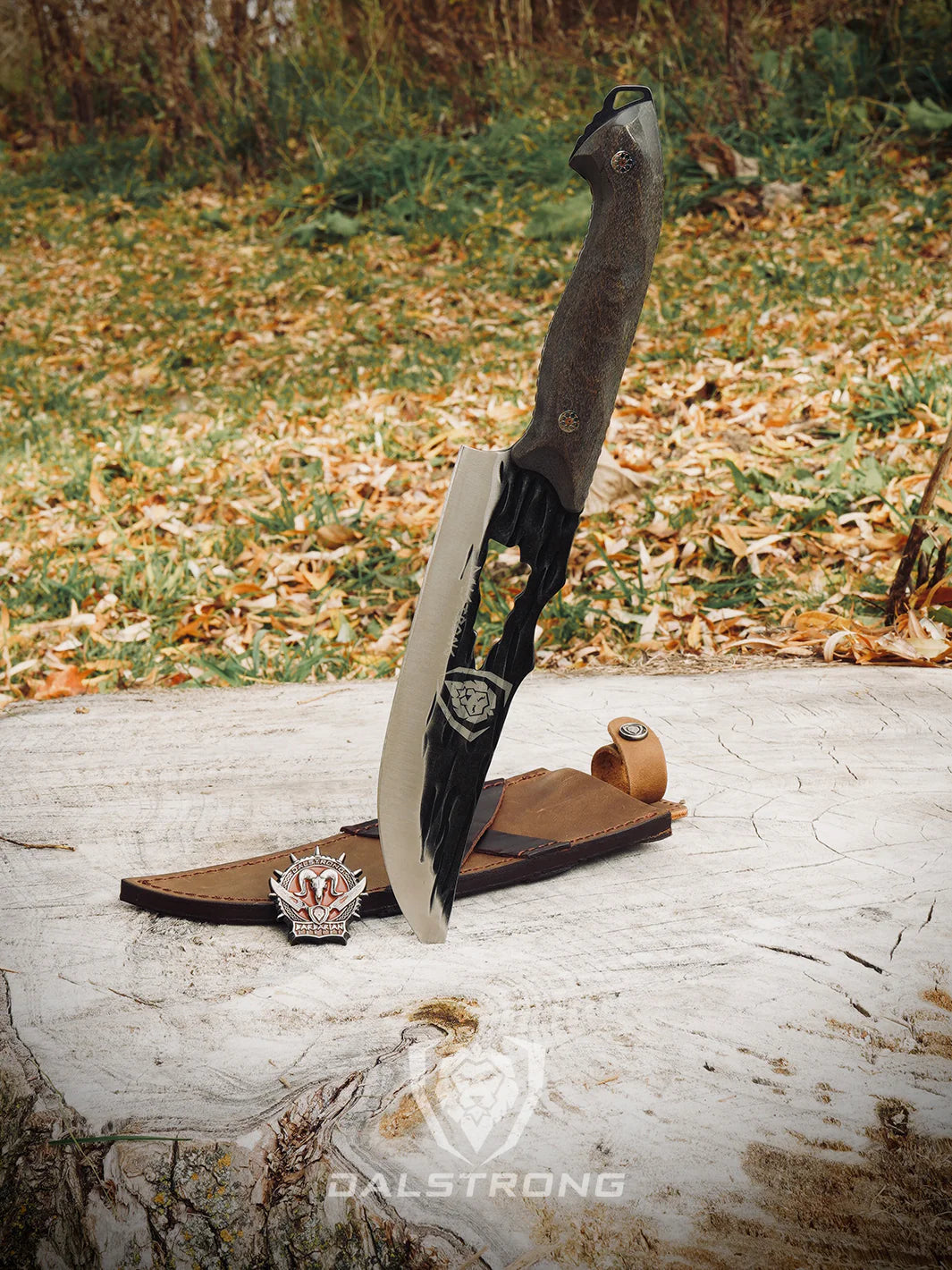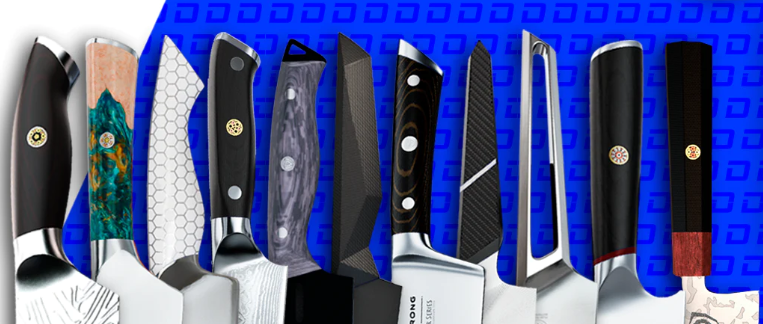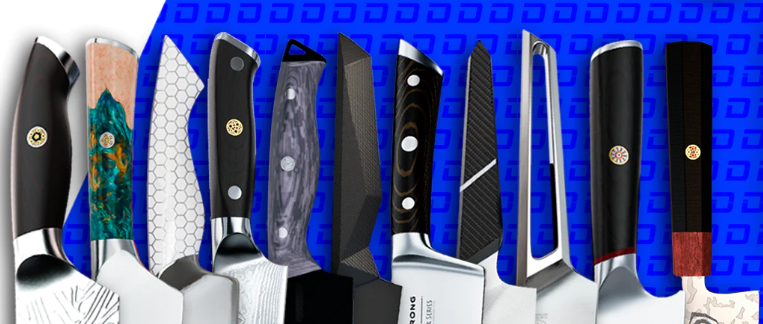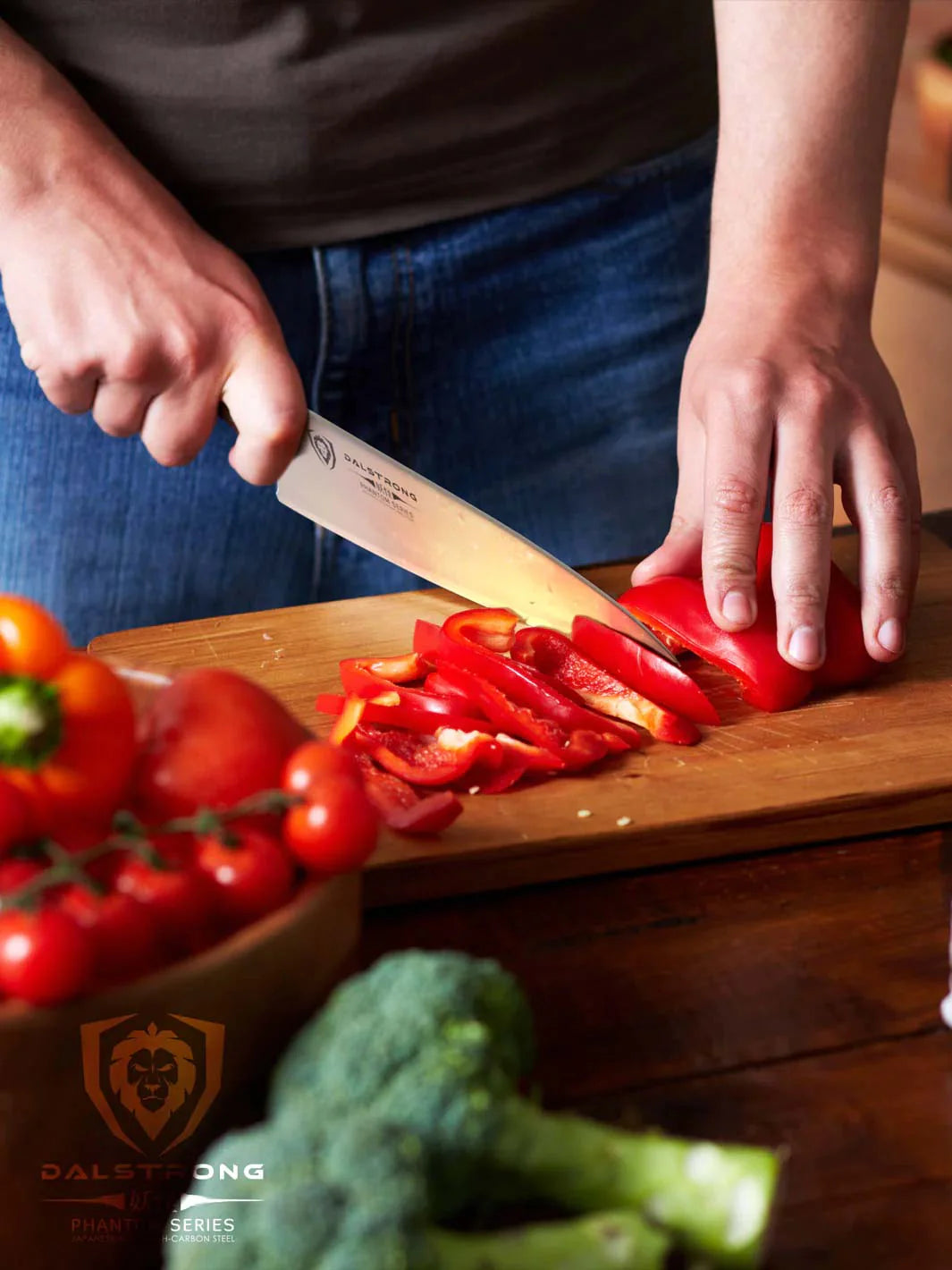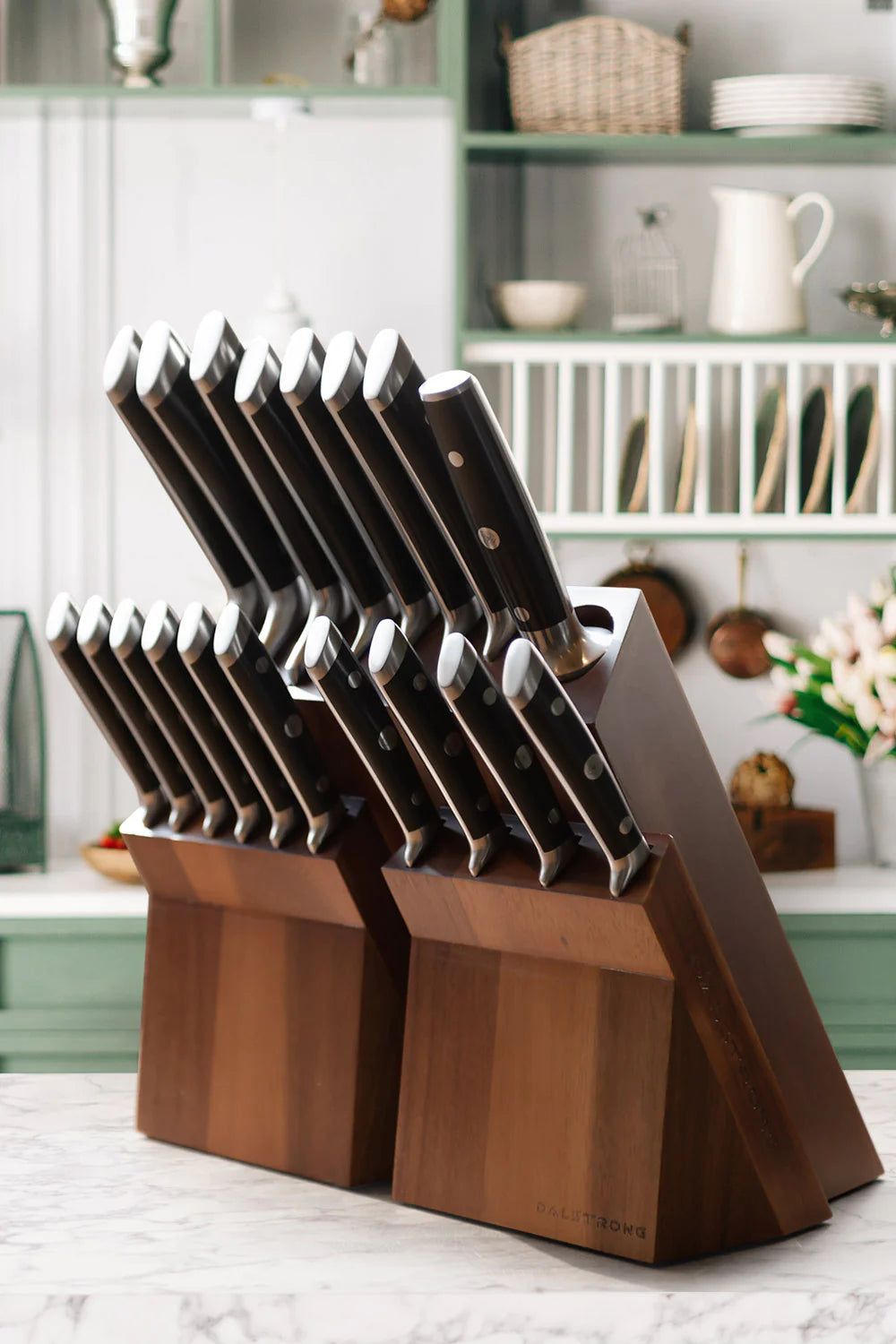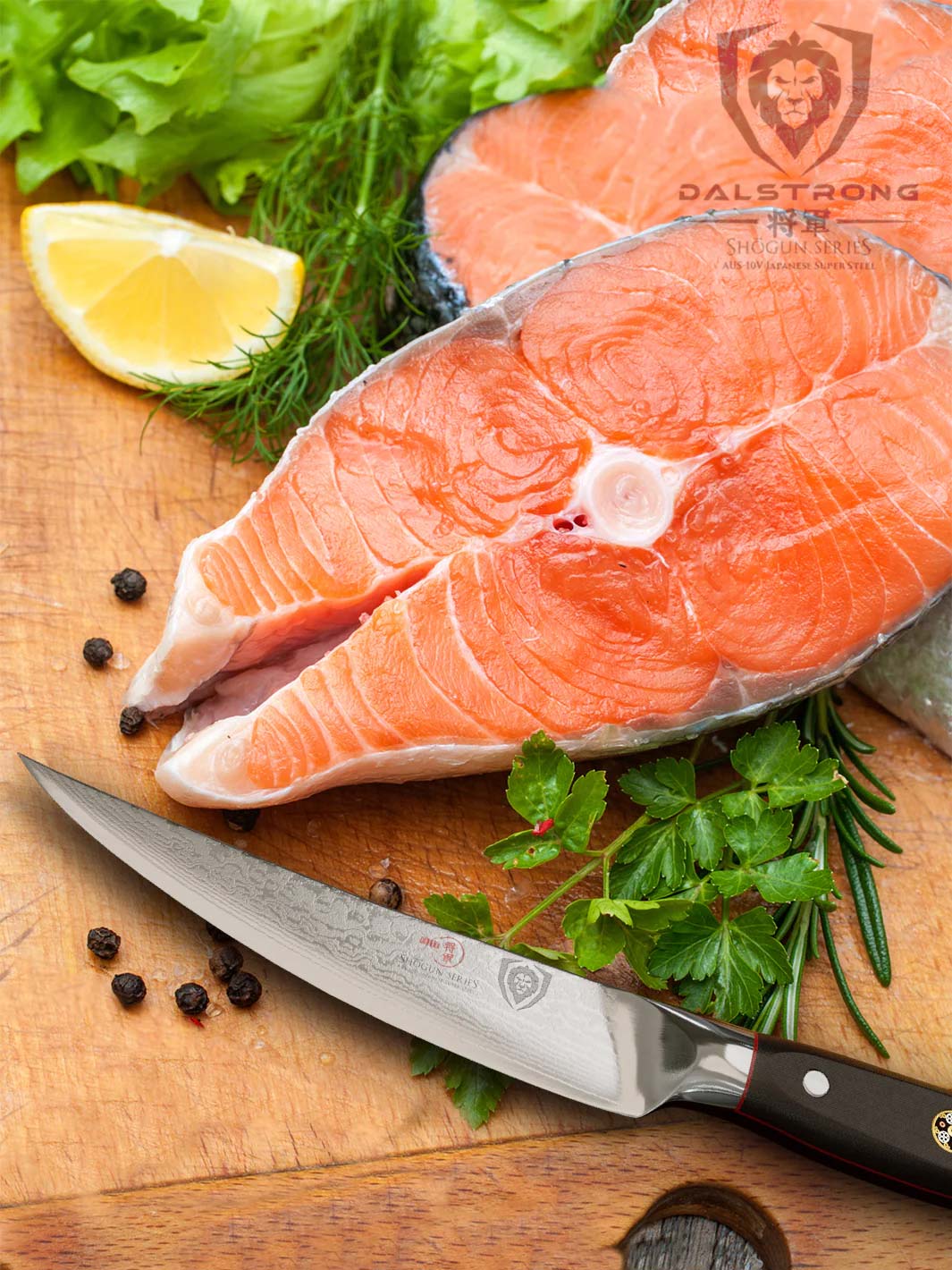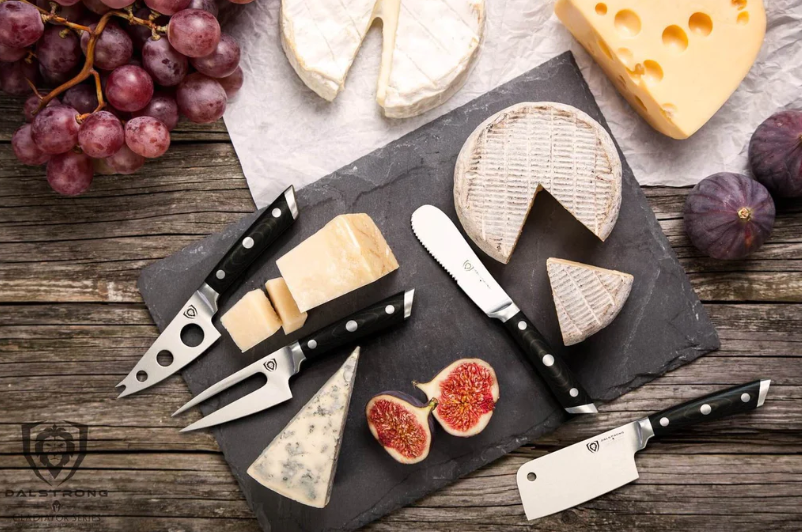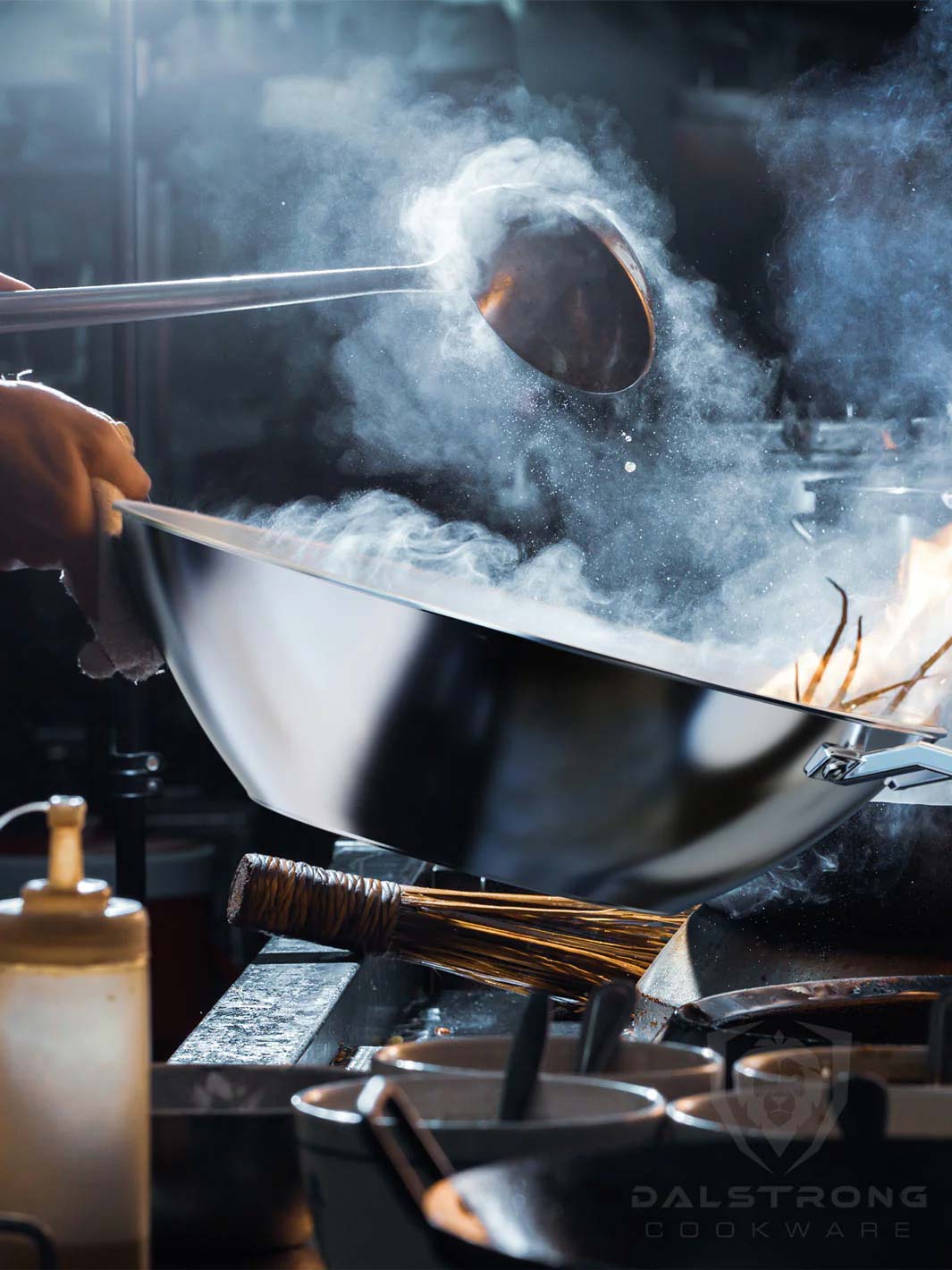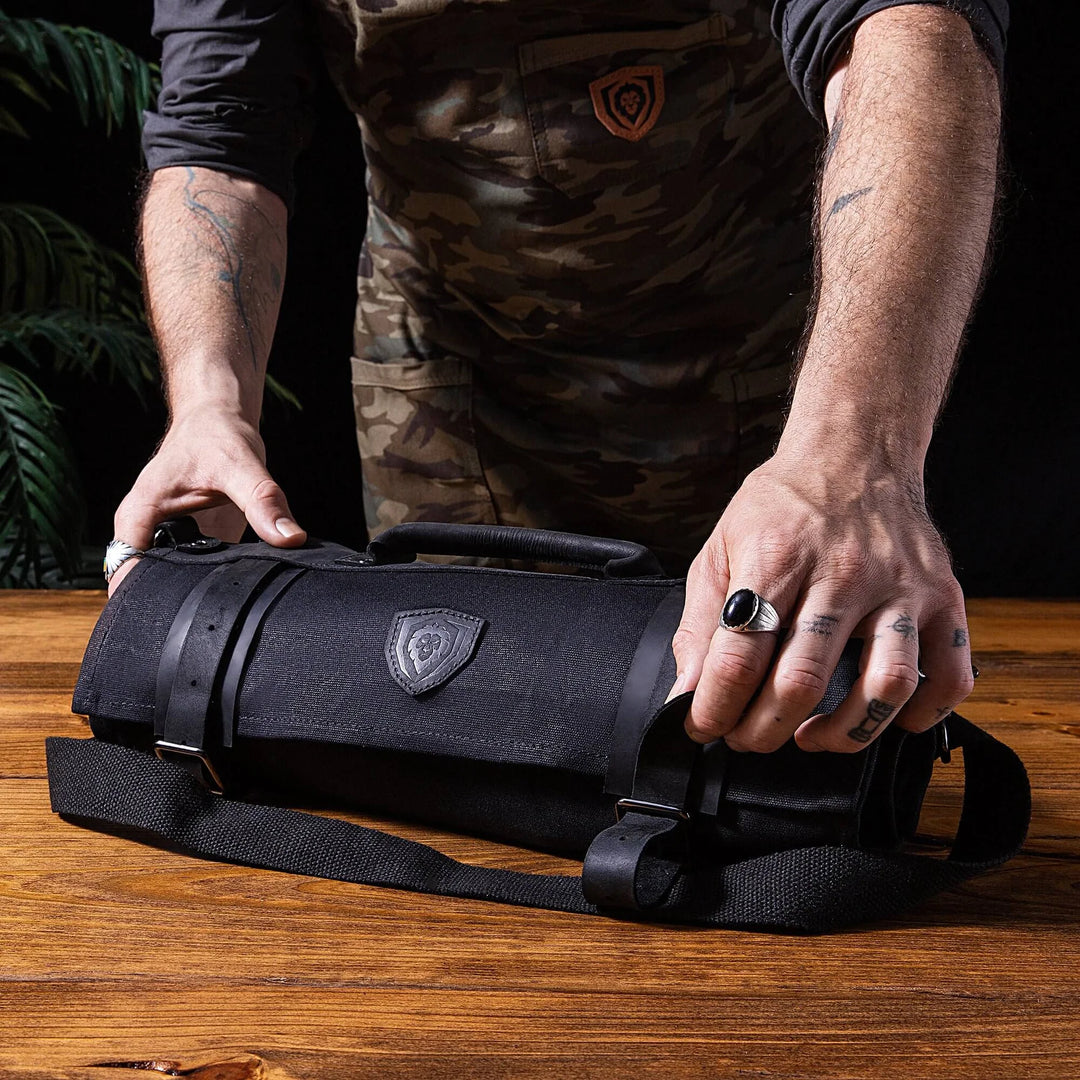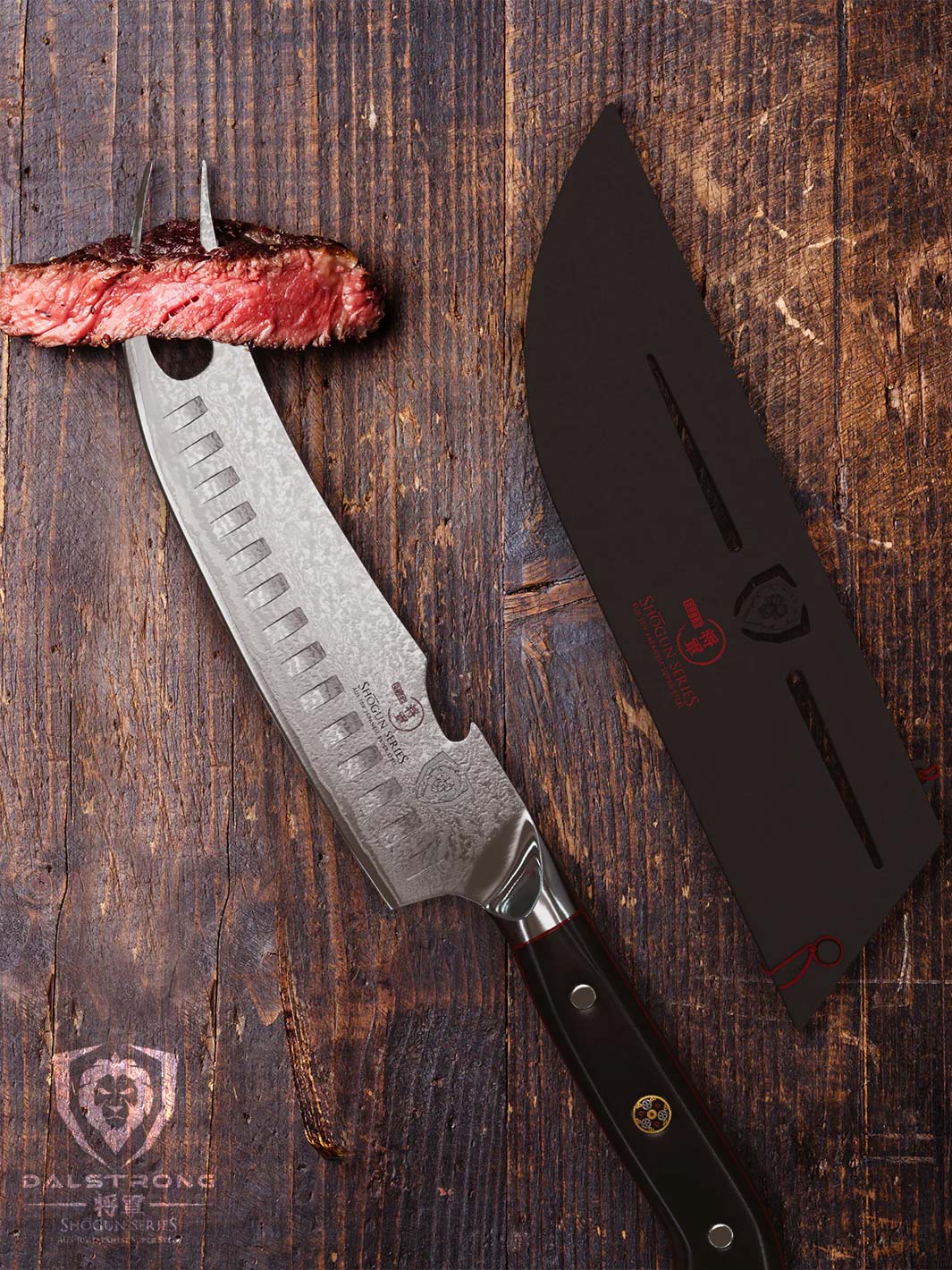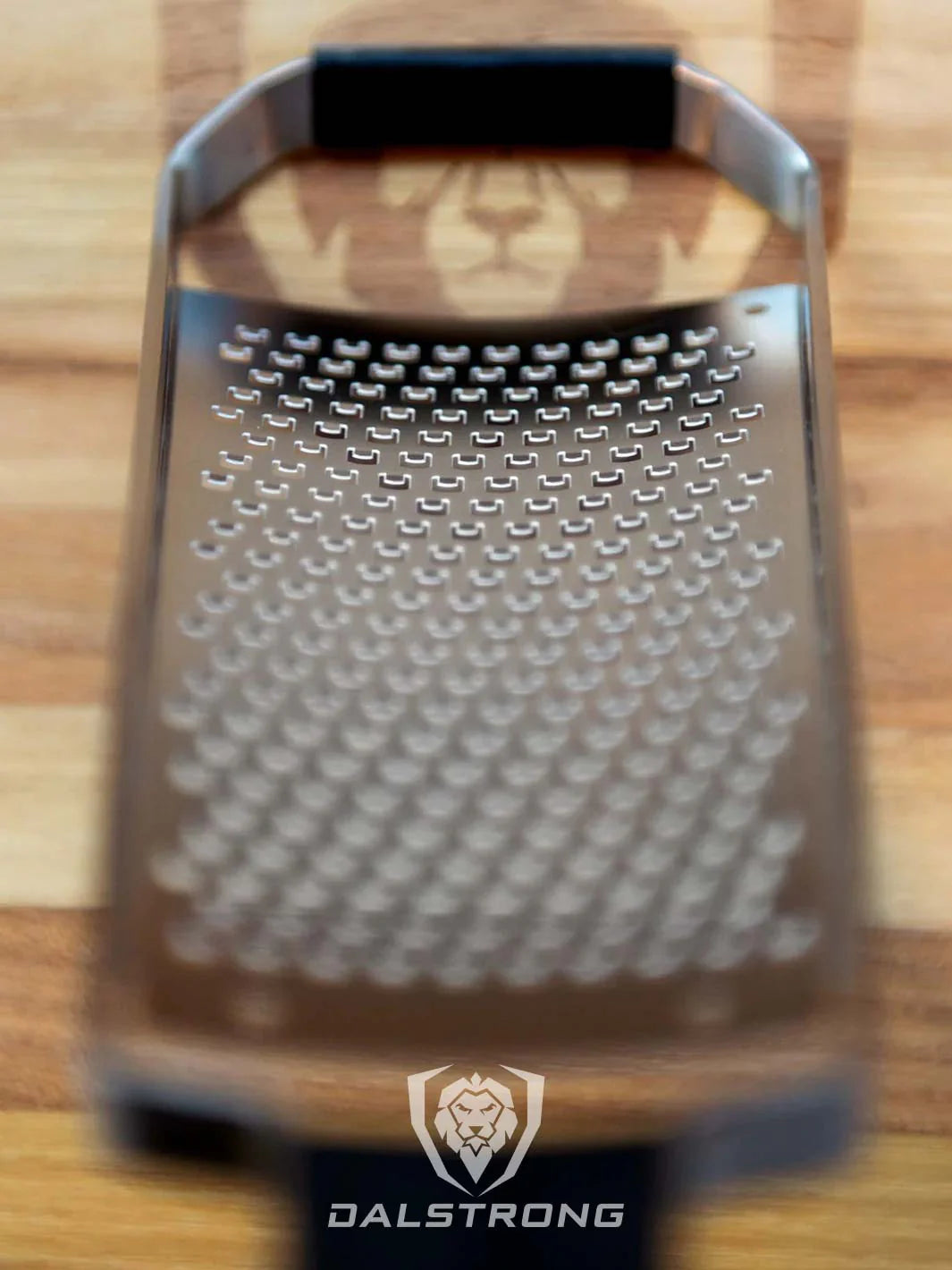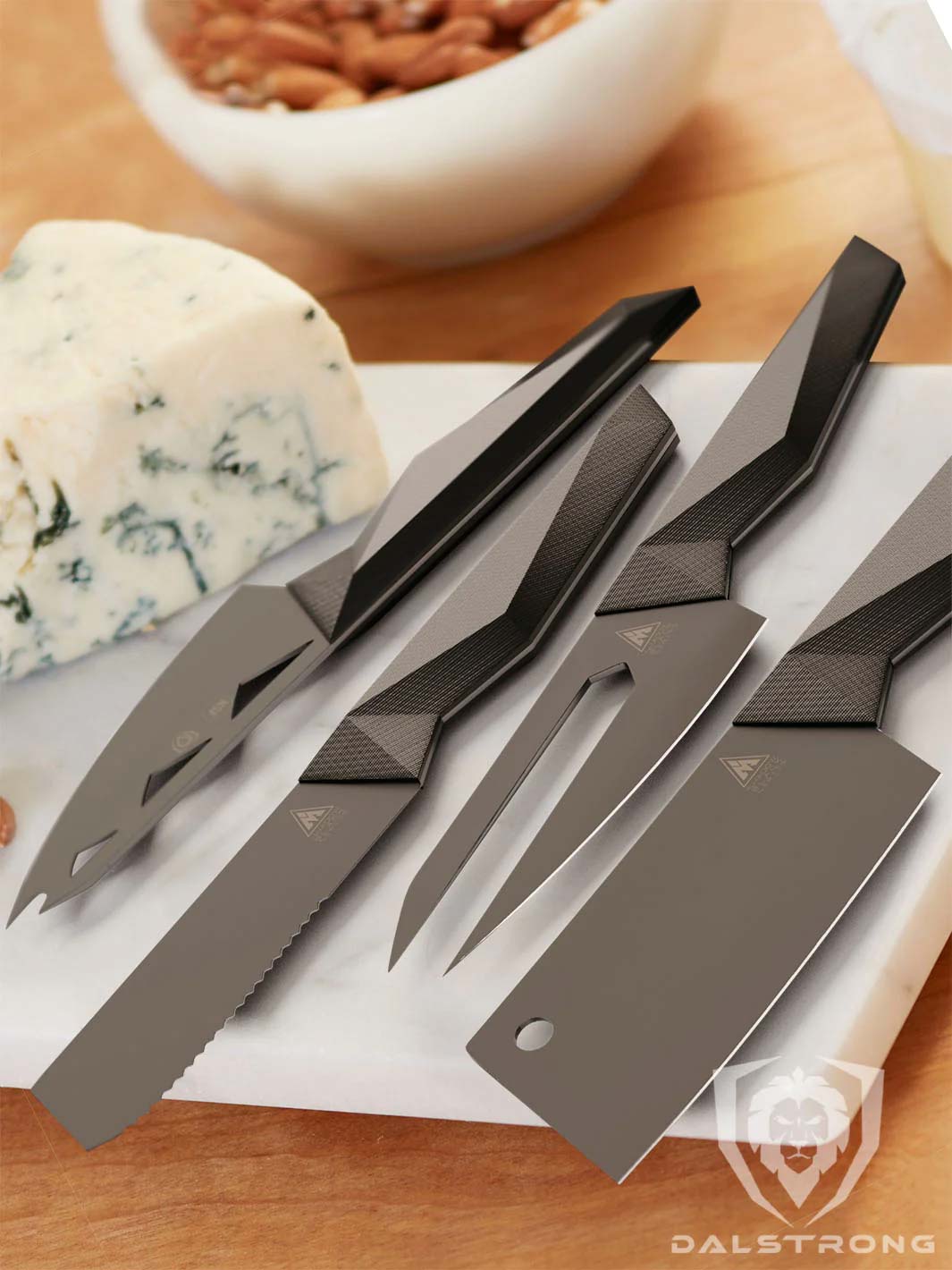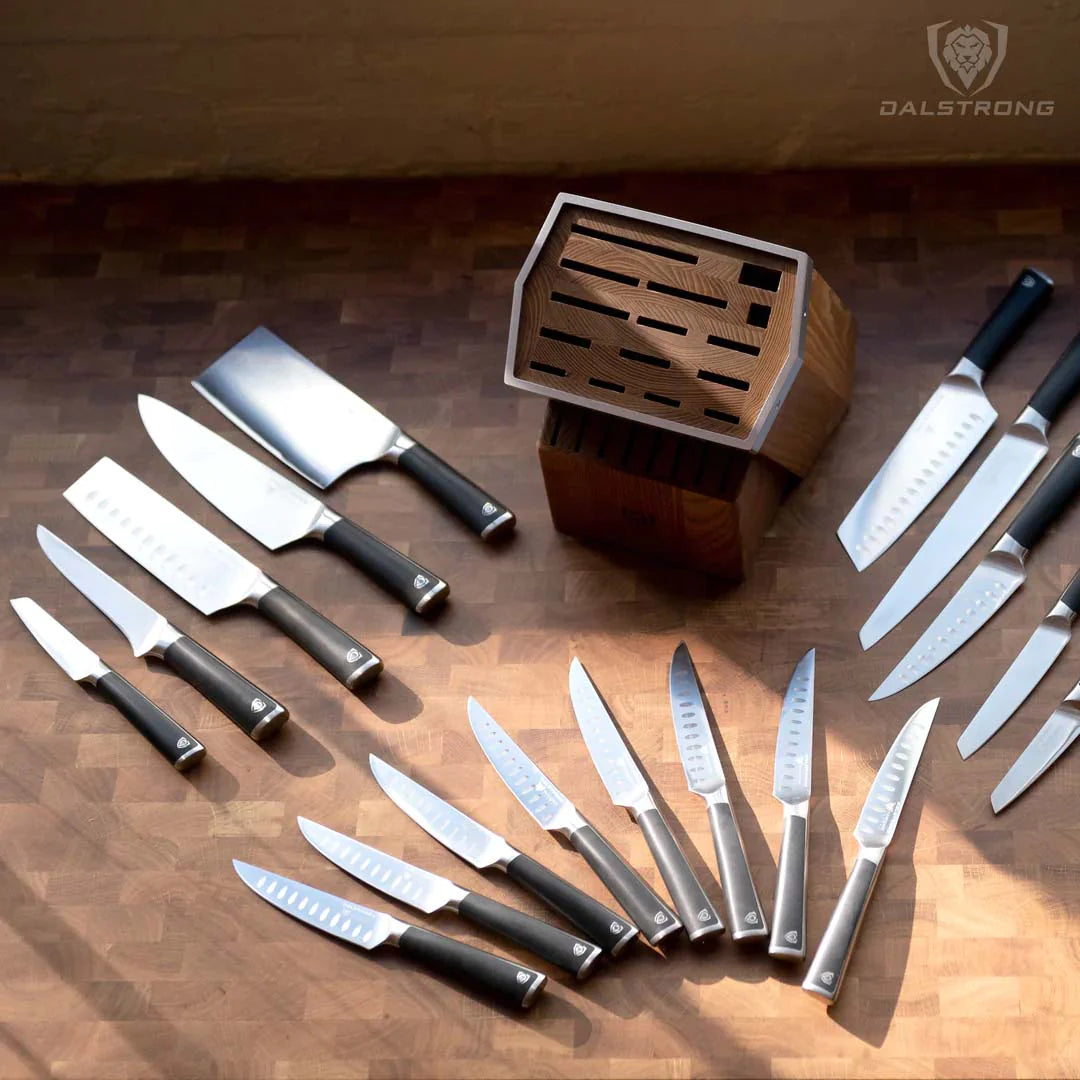Differences Between A Fillet Knife And A Boning Knife

Differences Between A Fillet Knife And A Boning Knife
- Boning knives tend to be heavier and more rigid.
- Filleting knives are lighter and more flexible.
- Boning knives are used to separate meat from bones.
- Filleting knives are best for filleting fish.
- Though they are often similar, there are differences in maneuverability and design.
1. Similarities Between A Fillet Knife And A Boning Knife
While they overlap on certain tasks, the fillet knife and the boning knife are two entirely different beasts.
The boning knife, as you might have guessed, is generally used to remove the bones from meat and fish. Despite possessing a certain degree of flexibility, they’re usually stiffer than fillet knives. With a blade length typically ranging between 5 and 7 inches, boning knives are also thicker and can easily debone a wide array of meats.
On the other hand, the purpose of the fish fillet knife is a bit more specific. Specially conceived to work with more delicate meats, their sharp blade generally falls somewhere between 5 and 9 inches and it’s way thinner and more flexible than other knives, making it the perfect tool to descale, de-skin, and de-bone smaller fish in a matter of minutes.
Part of the process of bridging the gap between “total amateur” and “kitchen expert” is being intimately familiar with your knife collection. Being able to quickly and easily spot which kitchen knife is which, what each knife is used for, and the best way to take care of it. If you’re a certain type of enthusiast, you might even go as far as learning the entire history of that type of knife.
For most home cooks, a great many of these knives will be easy to pick out based on appearance alone, at least the knives that are usually part of most knife sets. Chef’s knives are pretty easy to identify. Bread knives stand out pretty clearly. Small utility and paring knives are also easy to pick out. But then we start to get into murky territory.
Take the fillet knife and the boning knife, for instance. If you put them side by side, the typical home cook won’t really be able to tell the difference. In fact, many people use these knives incorrectly, or even ignore them altogether. That is a shame, because they’re among the most useful specialized kitchen knives, and they can make your life a whole lot easier if you use them right. Used correctly, Dalstrong fillet knives are more efficient and practical than an electric fillet knife.
The most immediate similarity is the shape of the knives. They’re both unusually thin, feature a pronounced curve, and are often of similar length. For the longest time, I thought they were different varieties of the same type of knife, meant to be used for the same purpose. Boning knives and filleting knives also tend to be made of the same materials, which only adds to the confusion.
These similarities will sometimes lead to the knives being used interchangeably. To be clear, this is okay -- it’ll work in a pinch, or if you only have one of these knives at hand. But if you care about the quality and precision of your cuts, it helps to know which knife you should be using for the task at hand.
So let’s start making your kitchen experience easier by outlining the difference between a filleting knife and a boning knife.
2. Differences Between A Fillet Knife And A Boning Knife
In spite of their similar shapes and sizes, there are several points of difference between fillet knives and boning knives. It’s important to keep an eye out for these differences to make sure you use these knives to their fullest potential.
Purpose
This is what it all comes down to, and what all the following differences stem from. There is some overlap here, of course, but there is a very important distinction when you really get into the nitty gritty of it.
As their names might imply, boning knives are especially designed for separating meat from the bone; that means cutting through sinew, muscle, fat and connective tissue. If you’re looking for a knife to perform fine cuts of butchery for bone in-pieces, you need a boning knife. It’s a tough job, but the boning knife is specifically designed to get it done.
Meanwhile, a fillet knife is meant to be used to separate meat from bone and skin, especially for fish. As its name implies, it’s a great choice if you love to prepare and eat fish-- and if that’s not you, it might still be a fantastic gift for the avid fisherman in your family.
It’s common for these knives to be used interchangeably, though the results would not be optimal. You can use a fish fillet knife to separate meat from bones, but that would only really work with small fish bones. And you can use a boning knife for filleting, but its rigidity would likely get in the way. To ensure the best results, always use the knives for their intended purposes.
Blade length and weight
Boning knives and filleting knives come in different lengths. Most commonly, you’ll find both types of knives in the 5-to-8 inch range. Shorter fillet knives are better for smaller fish, while the longer blades work better with the larger fish.
While they come in similar sizes, you’ll find that filleting knives tend to be lighter than boning knives due to their design and construction. The blade of fillet knives tends to be thinner than that of boning knives. Which brings us to our next point...
Blade maneuverability
Fillet knives are designed to be more flexible. Their blade is supposed to “give” a little, allowing it to easily cut through fish and separate it from skin. This flexibility allows for the more precise cuts required for more delicate meats. Meanwhile, boning knives are more rigid. They’re designed for tougher use, cutting through connective tissue to separate meat from bones.
If you attempted to use a flexible fillet knife for that, you’d find it difficult. Worse, you actually run the risk of the blade snapping, because it is not designed for such use.
Blade design
Both types of knives tend to feature a prominent curve, but if you look closely you’ll find key differences between them. It’s more common for boning knives to be straight all the way to the sharpened tip of the blade -- this sharpened tip serves an important function, easily piercing the meat. You’ll also find less pronounced curves altogether with boning knives.
Fillet knives have a much more pronounced upward curve, leading to a curved tip. This is designed for long and steady cuts, which is perfect for filleting fish but considerably less practical for other kitchen scenarios.
Learn more about where Dalstrong Knives are manufactured here!
3. Main Features Of A Boning Knife
- Thinner than most kitchen knives
- Not as thin as a fillet knife
- Sturdy construction, with rigidity but some give
- Pointed tip for piercing meat
- Usually stainless steel or high carbon steel steel
A boning knife is best for:
- Separating meat from bones
- Removing skin from the meat
- Cutting through ligaments and connective tissue
- Cutting the core of an apple
- Carving cake
4. Main Features Of A Fillet Knife
- Thinner than a boning knife
- Pronounced curve leading to its pointed tip
- More flexible than a boning knife
- Usually stainless steel or high carbon steel
A fillet knife is best for:
- Filleting fish
- Removing fish scales
- Segmenting citrus fruit
- Finely mince onions or shallots
- Preparing fruits and vegetables
5. Best Boning Knives To Buy
Of course, there’s a huge variety of excellent boning knives to pick from. To make things a little easier for you, we’ve outlined our picks for best boning knives to buy below.
1. Boning Knife 6" | Valhalla Series
This incredible 6” boning knife is worthy of the Vikings that inspired it, with ruthlessly sharp edges and power enough to effortlessly slice through muscle and sinew. Not only that, but it looks the part too with its gorgeous design.
PROS:
- Precision forged, ultra-sharp five-layer stainless steel blade.
- Tapered design for hardness and flexibility.
- Premium quality blue resin and stabilized wood handle.
- A truly beautiful and unique-looking knife, comes with a gorgeous leather sheath.
CONS:
- This knife features a decidedly eye-catching design; if you’re looking for something a bit more understated, you’d be better served by some of the other knives on this list.
2. Phantom Series | 6" Straight-Edged Boning Knife
The Phantom Series is a fantastically elegant collection of kitchen powerhouses, and this 6” boning knife is no exception.
PROS:
- Extremely sharp, scalpel-like blade.
- Precision forged blade with premium Japanese AUS-8 steel at 58 HRC.
- Very easy to clean; hygienic and low-maintenance.
- Incredible value for the price..
CONS:
- If you’re looking for heft, this knife might be a little bit on the lighter side for some home cooks.
3. Shogun Series | 8" Boning Knife
A combination of craftsmanship, performance, and design. This boning knife from Dalstrong’s Shogun Series will help you sail through any culinary challenge you come across.
PROS:
- 67-layered Damascus sharpened under the 3-step Honbazuke method.
- Decorated with the beautiful Tsunami Rose blade pattern.
- Perfect for easily deboning beef, pork, wild game, and more.
- Durable, military-grade G10 ergonomic handle.
CONS:
- At 8” long, this might be larger than what you’ll need; think about what you’ll use it for and consider whether you’d be better served by a shorter blade.
- This premium 8” boning knife is towards the upper end of the price range represented on this list.
4. Gladiator Series | 6" Boning Knife
Dalstrong’s acclaimed Gladiator Series is an excellent set of kitchen powerhouses made up of premium materials.
PROS:
- The blade is made of precision forged, wear resistant, single-piece, high carbon ThyssenKrupp German steel, fantastic edge retention.
- Military-grade G10 handle, highly impervious to heat, cold, and moisture.
- Hand-sharpened to 16-18°, providing the ideal balance between sharpness and durability.
- Excellent value for the price.
CONS:
- At 6” long, this might be smaller than what you’ll need; think about what you’ll use it for and consider whether you’d be better served by a longer blade.
5. Crusader Series | 6.5" Boning Knife - NSF Certified
The Crusader Series brings an understated elegance to your kitchen. These all-steel knives handle beautifully.
PROS:
- Clean, elegant, minimalistic design.
- Precision forged, ultra-sharp, single-píece high-carbon stainless steel.
- The blade seamlessly transitions into a high-carbon stainless steel handle, with a hygienic design that leaves virtually no room for debris.
- Incredible value for the price.
CONS:
- Because of its handle design, this knife is a bit on the lighter side.
- If you’re a fan of a flashier design, check out some of the other knives on this list.
6. Best Fillet Knives To Buy
And just like with boning knives, there’s a great selection of fillet knives to pick from. Below, we’ve outlined our picks for the best fillet kitchen knife.
1. Crusader Series 6.5" | Fillet Knife - NSF Certified
Here’s another entry from Dalstrong’s Crusader Series, which features a less-is-more approach to its design while bringing premium performance and material.
PROS:
- Comes with a hand-crafted Acacia wood magnetic sheath.
- Blade is made of ThyssenKrupp German stainless steel at 58+ Rockwell.
- Painstakingly hand-sharpened to 16-18° per side.
- Hygienic design -- a single piece of high-chromium stainless steel transitions seamlessly into its handle, with virtually no room for debris.
CONS:
- Just like with its boning knife counterpart, this knife’s handle design makes it a bit on the lighter side.
- If you’re a fan of a flashier design, check out some of the other knives on this list.
2. Gladiator Series | 6" Curved Fillet Knife
This 6” curved fillet knife is an absolute warrior when it comes to descaling, filleting, skinning, trimming, and butterflying all manner of fish.
PROS:
- Curved blade with a pointed tip, plus rock hollow divots to minimize drag on food.
- Looks fantastic and feels great to hold.
- Ultra-sharp 2.0mm thin blade for flexibility.
- With an ergonomic, ambidextrous black G10 handle.
CONS:
- Keep in mind that this is a 6” fillet knife blade. If you need something longer, check out some of the other knives on this list, such as the Gladiator Series | 7" Flexible Fillet Knife.
3. Shadow Black Series | 6" Filet Knife - NSF Certified
Want a quality fillet knife that’ll make quick work of small fish or large fish while looking like no other filleting knife you’ve ever seen before? You can’t go wrong with this 6” fillet blade from Dalstrong’s Shadow Black Series.
PROS:
- Hand-sharpened edge to 16-18° per side.
- Precision forged, ultra sharp, wear-resistant, single-piece, high carbon steel.
- Its unique handle design, inspired by the F-117 Nighthawk Stealth Fighter, provides a comfortable grip on this ruthless filleting machine.
- Midnight black titanium coating, cooler-looking than just about any other knife in your collection.
CONS:
- The black titanium coating makes sharpening the blade a bit more difficult than usual, but it’s still easy to do.
- Not everyone is a fan of this type of knife design. There’s no accounting for taste!
4. Gladiator Series | 7" Flexible Fillet Knife
This masterfully crafted knife from the Gladiator Series is the ultimate tool for filleting larger fish or smaller fish, with its powerful but flexible blade.
PROS:
- Made of high-carbon German ThyssenKrupp Steel.
- Its tall blade height provides knuckle clearance, which helps with food preparation and chopping.
- Ambidextrous black G10 handle, laminated for extra strength and sanitation.
- Amazing gift for freshwater fishing enthusiasts.
CONS:
- If you’re inexperienced at sharpening a blade of this shape, you might find it tricky to get a hang of at first.
5. Fillet Knife 6.5" | Valhalla Series
Just look at this thing. If this little guy doesn’t communicate “power and magnificence,” I don’t know what does. This 6” fillet knife from the Valhalla series will aid you in your kitchen conquests (and, thanks to its eye-catching design, get your guests talking).
PROS:
- Comes with a gorgeous leather sheath.
- Five-layer stainless steel blade at over 60 Rockwell Hardness.
- Structurally sturdy knife handle with premium quality blue resin and stabilized wood.
- Stain resistant and very easy to clean.
CONS:
- This knife features a decidedly eye-catching design; if you’re looking for something a bit more understated, you’d be better served by some of the other knives on this list.
7. Frequently Asked Questions
Crusader Series 6.5" Boning Knife - NSF Certified
Should I buy a fillet knife or a boning knife?
This will depend entirely on what you’re looking for. Do you see yourself preparing fish often? Do you need something that will make precise cuts? Or do you need a knife that is tough enough to work through cuts of meat and bone with ease? Both are great options for home cooks.
Our honest advice here is: buy both if you can. You’ll find that they each come in handy for different needs in the kitchen. Hopefully by laying out the differences above and showing you some options to pick from, you’ll be able to find the exact knife you’re looking for.
How do I sharpen a fillet knife and a boning knife?
Both types of knives follow the same sharpening procedure, though if it’s your first time sharpening knives that are this thin you might find it awkward at first. However, it’s still easy to do, and we’ve put together a thorough explainer on knife sharpening which you’ll find useful.
How long are fillet knives and boning knives supposed to be?
Both types of knives are usually in the 5-to-8 inch range, though it is possible to find larger examples of both. Since filleting knives are used to fillet fish, it’s more common for them to be on the smaller side.
What kind of knife do you use to cut fish?
With its size, design, and maneuverability, fish fillet knives are the perfect choice for cutting freshly caught fish into fillets. You can use a boning knife for this perfect, but you’ll find the results aren’t as precise or satisfactory.
8. The Fishmonger & The Sea - A Dalstrong Film
SHOP DALSTRONG FILLET KNIVES TODAY
You can also check in with our Expert Knife Finder Quiz and get specific recommendations based on your needs.
Written by Jorge Farah
Born on the coast of Colombia and based in Buenos Aires, Jorge is a cooking enthusiast and kitchenware obsessive with a tremendous amount of opinions.



















































































































































 Gladiator Series Boning Knife 6"
Gladiator Series Boning Knife 6"




























































